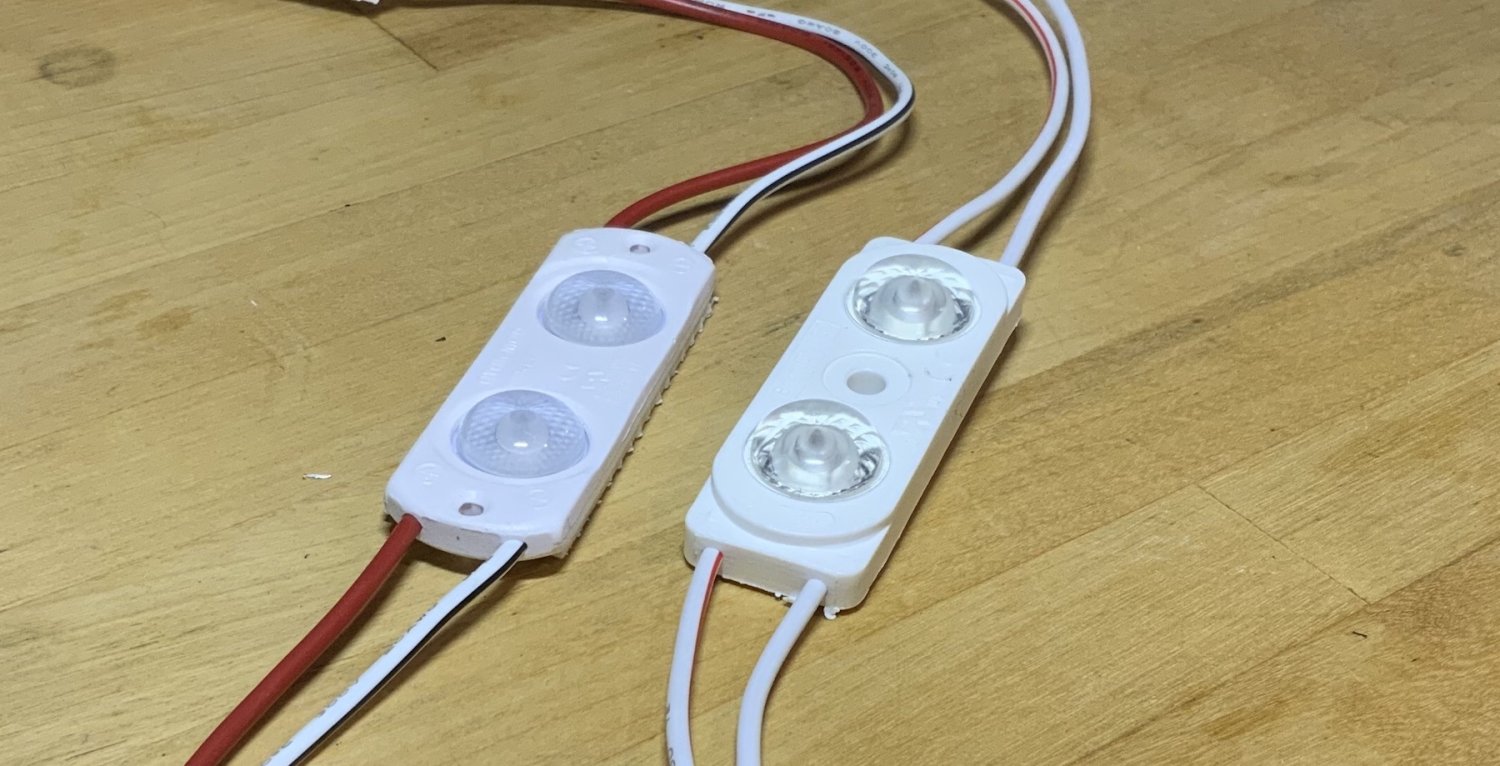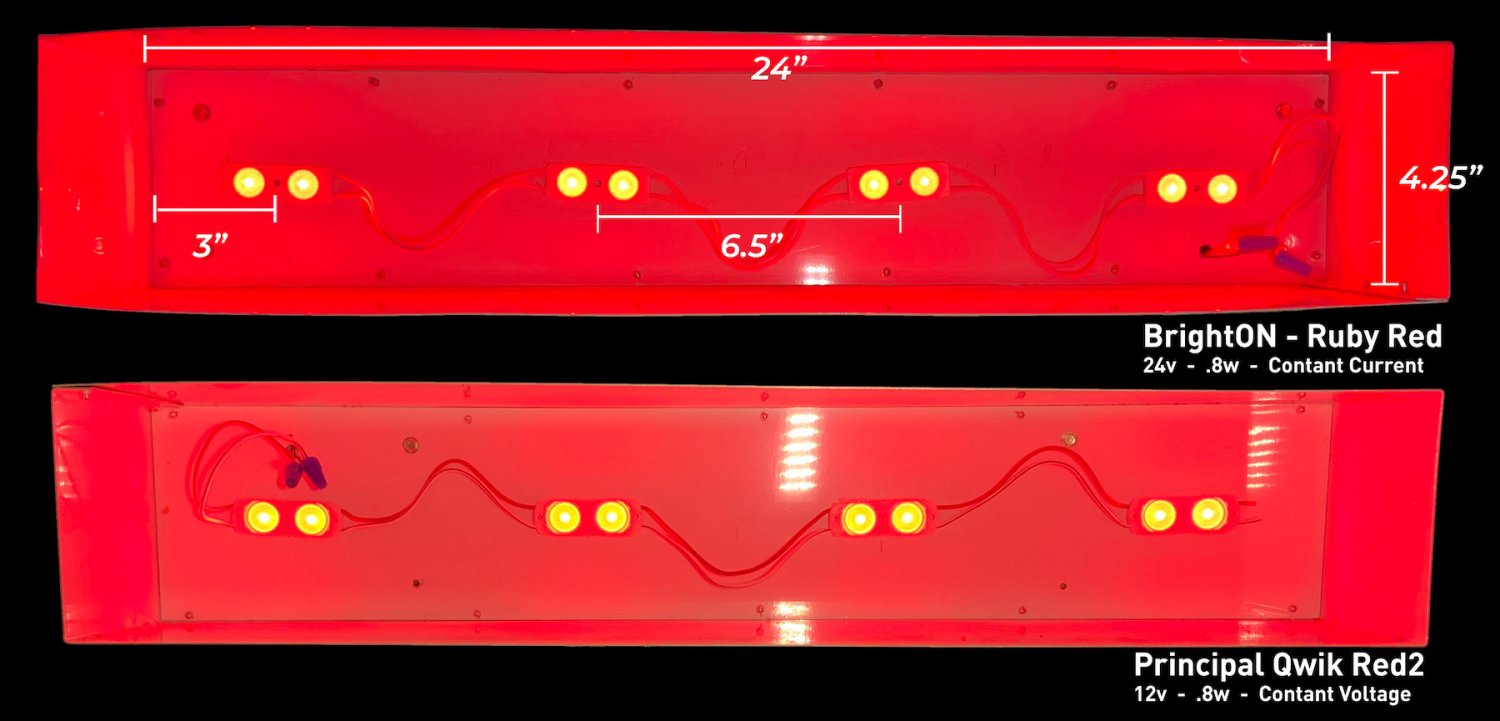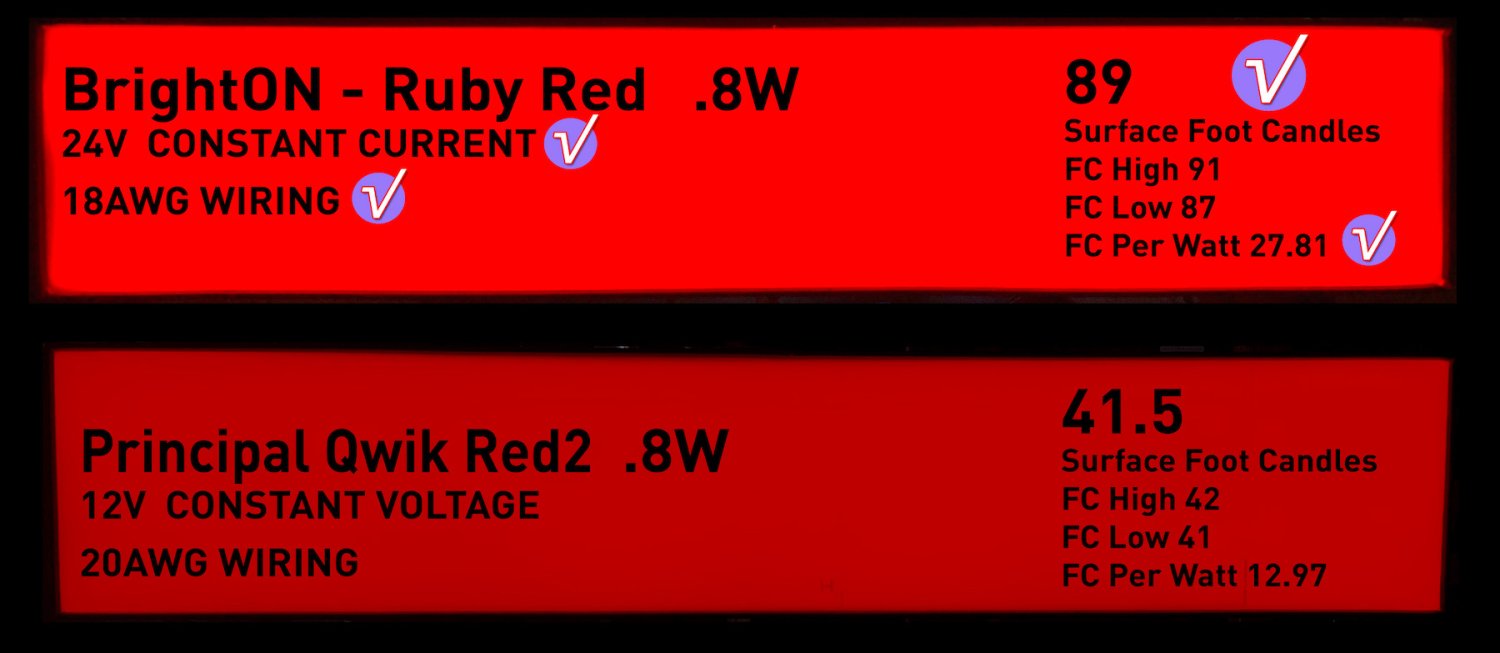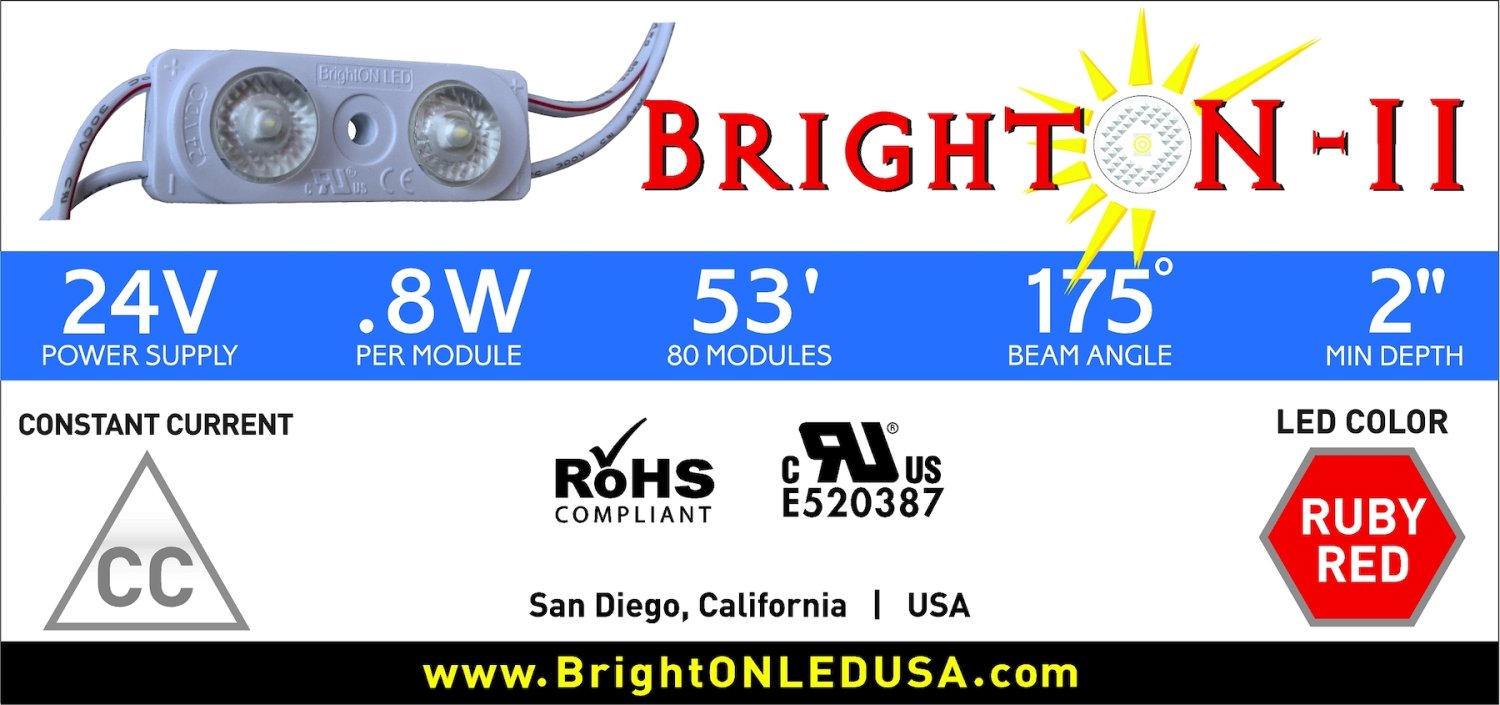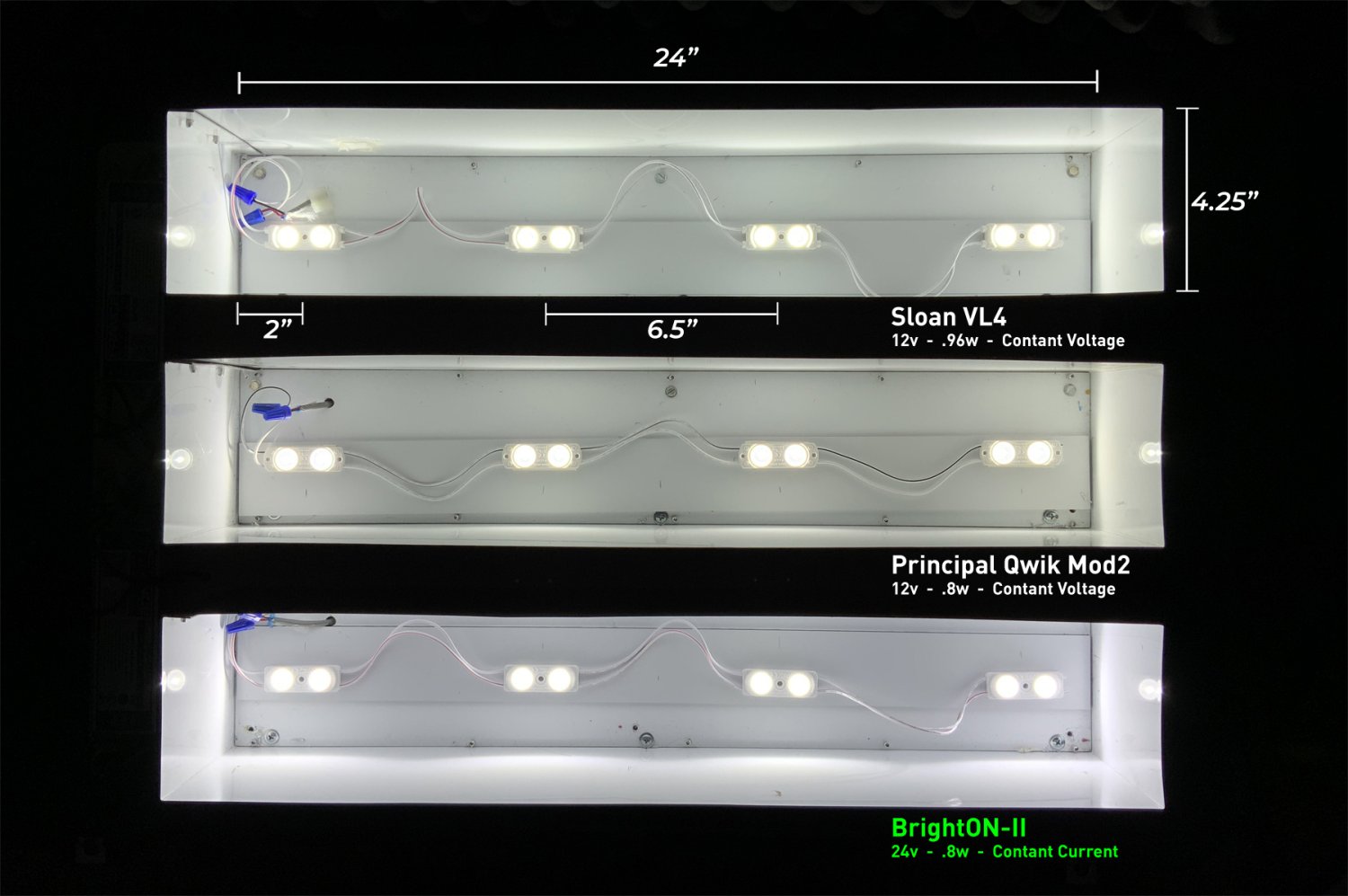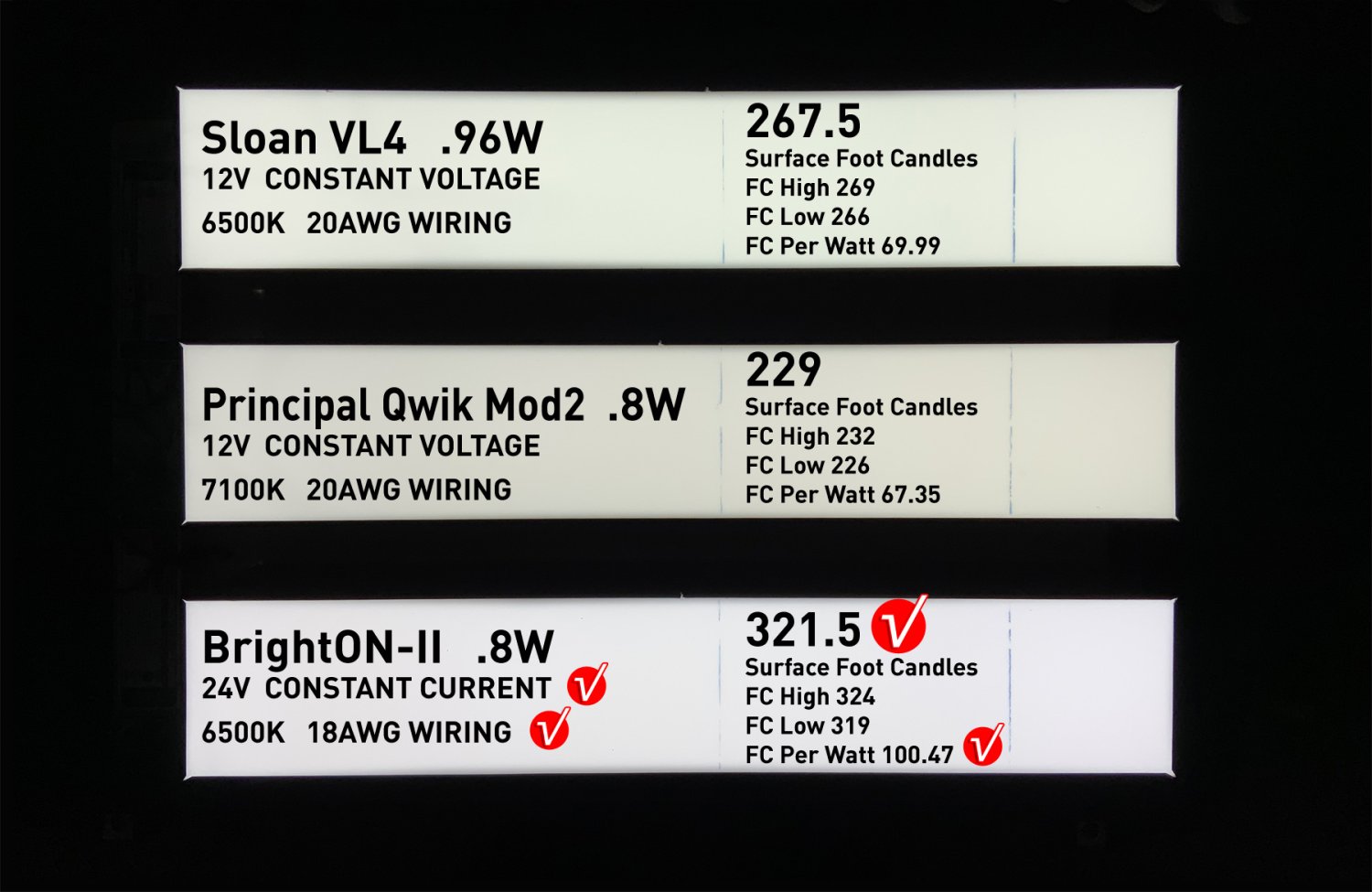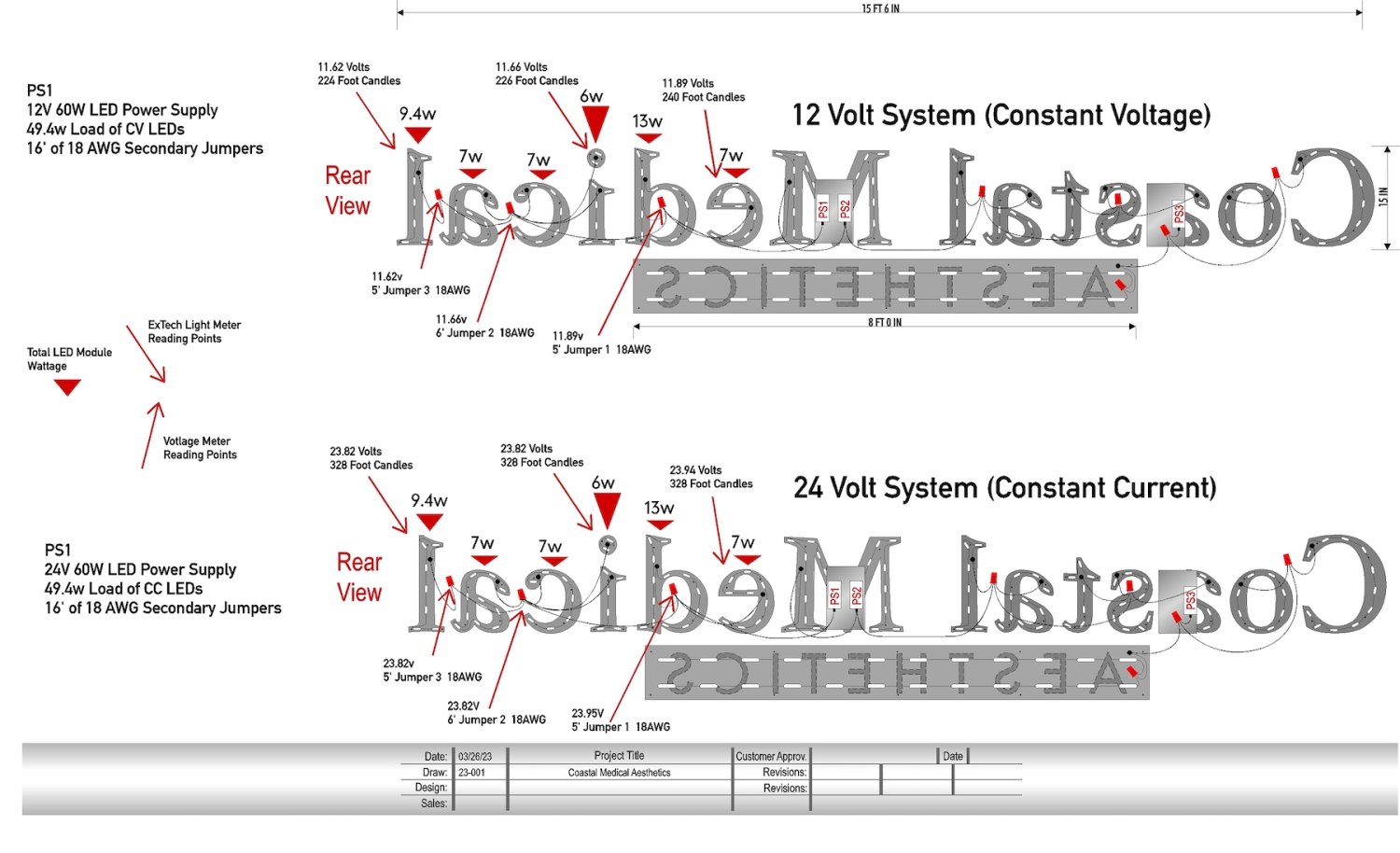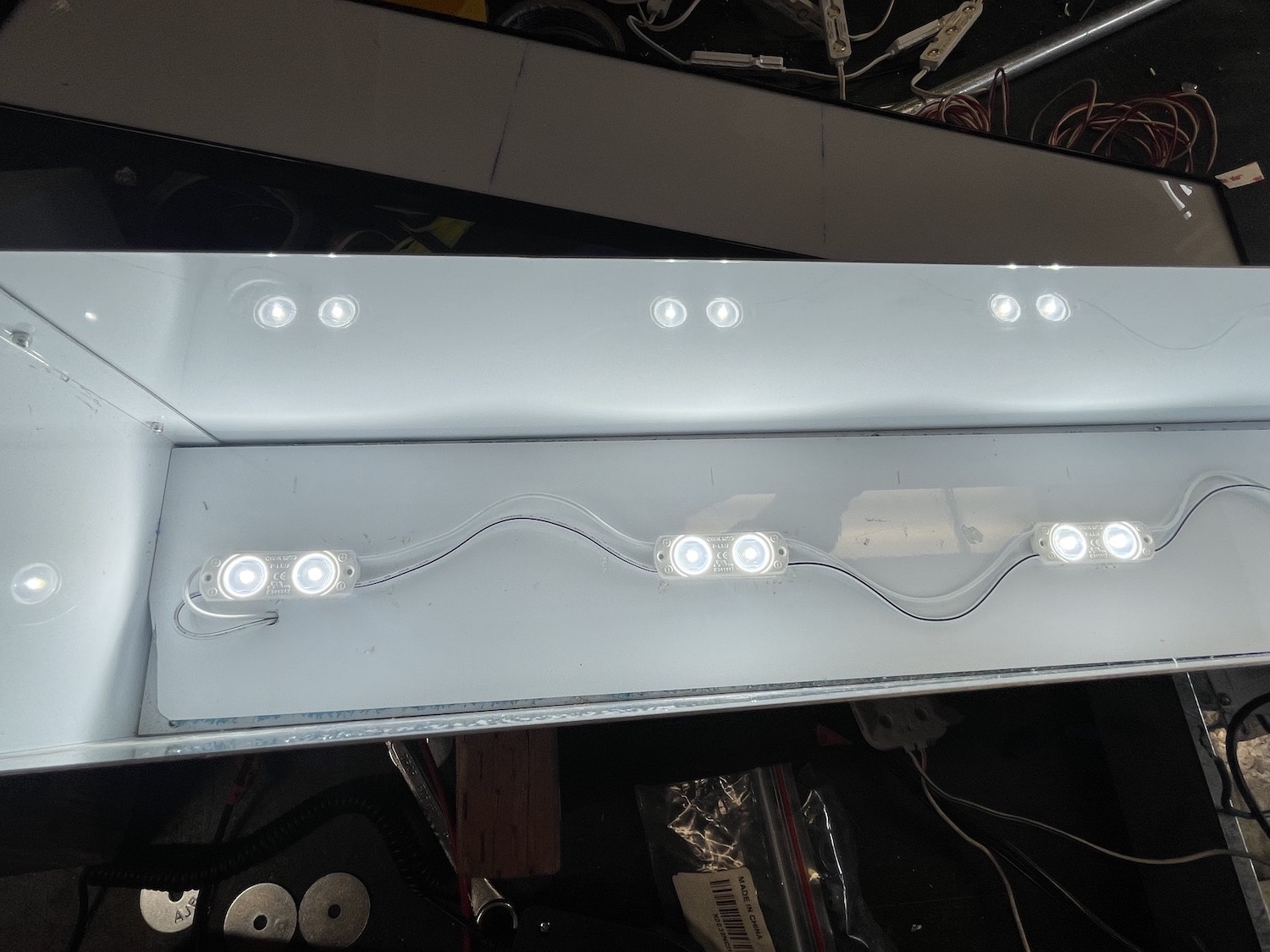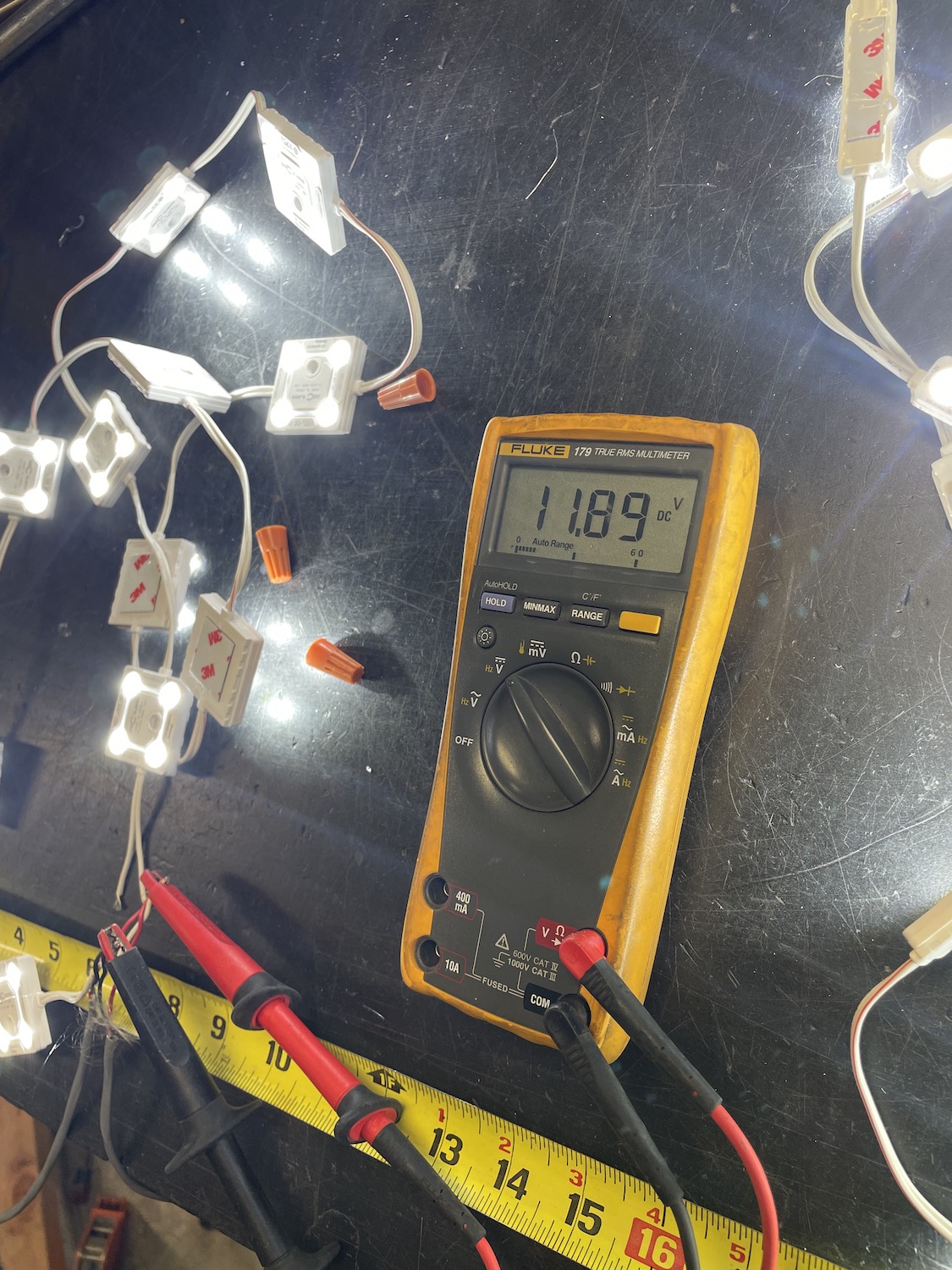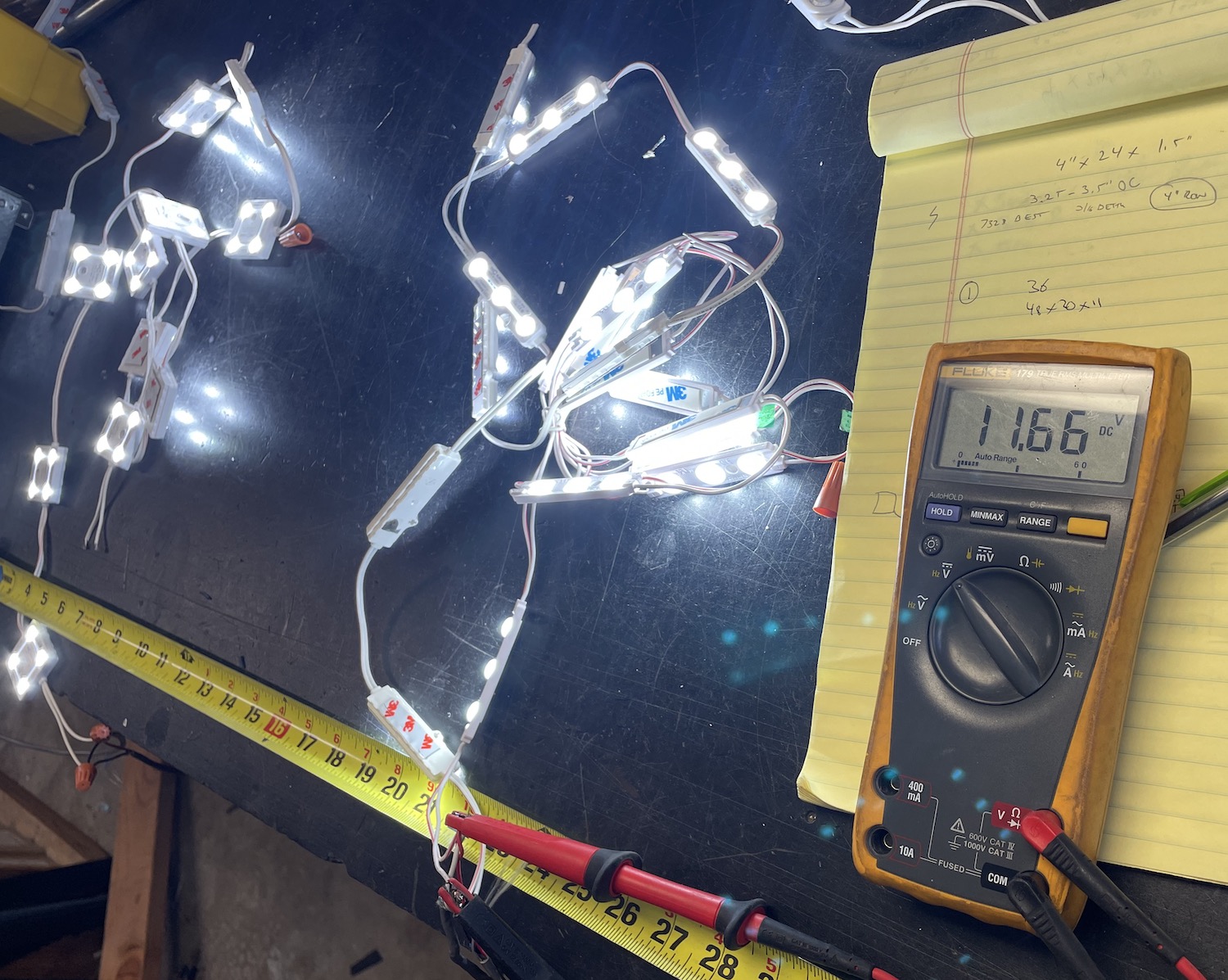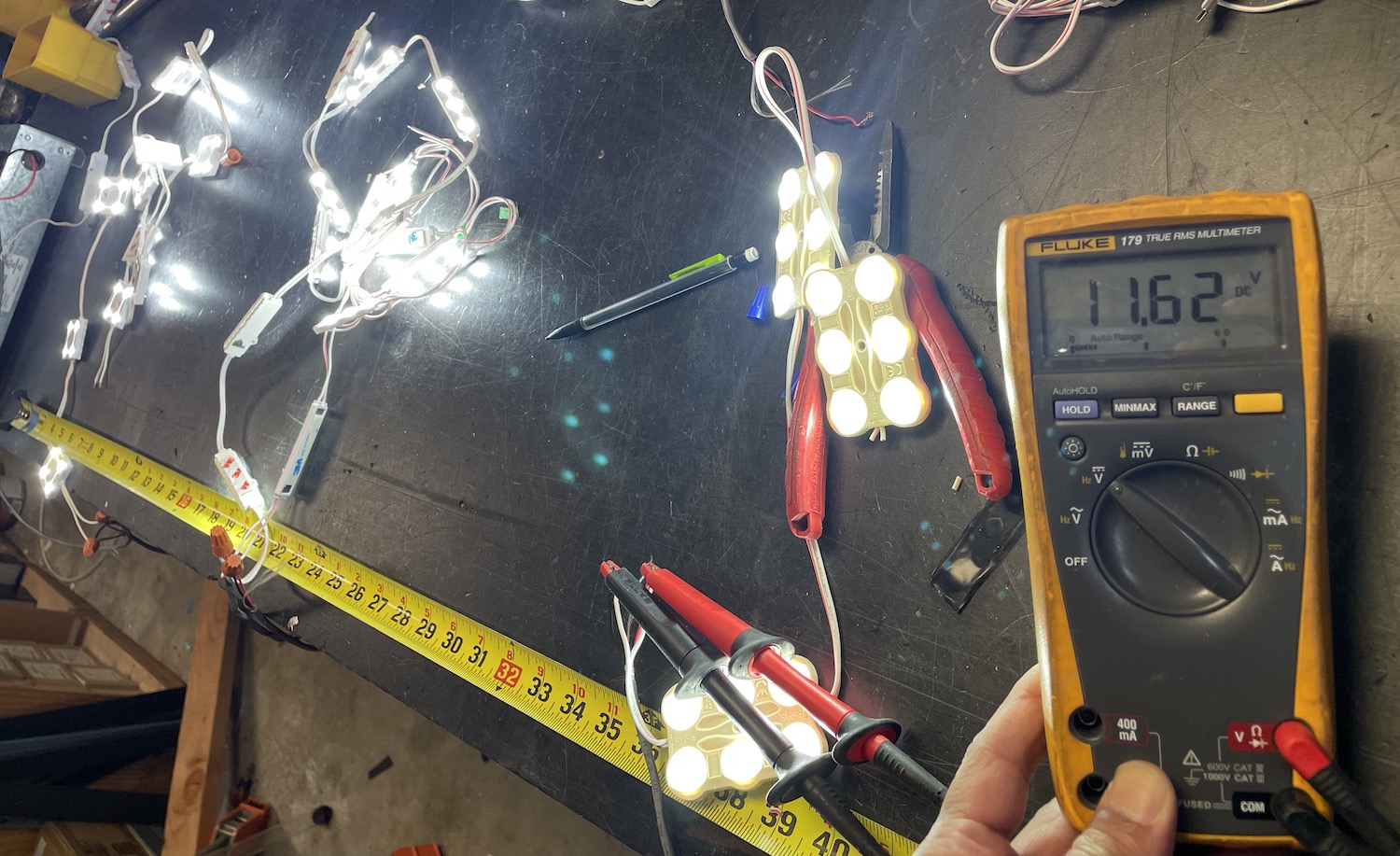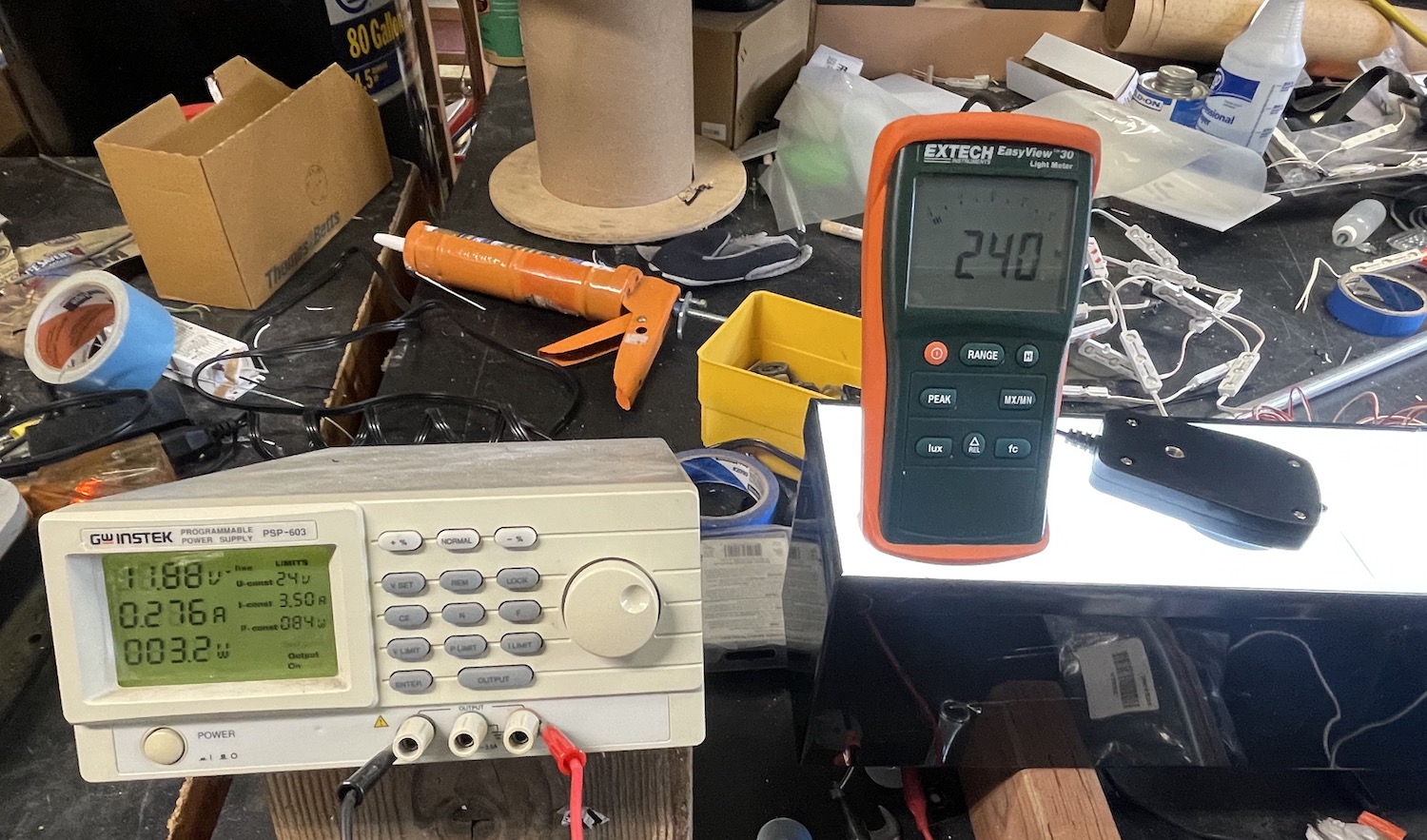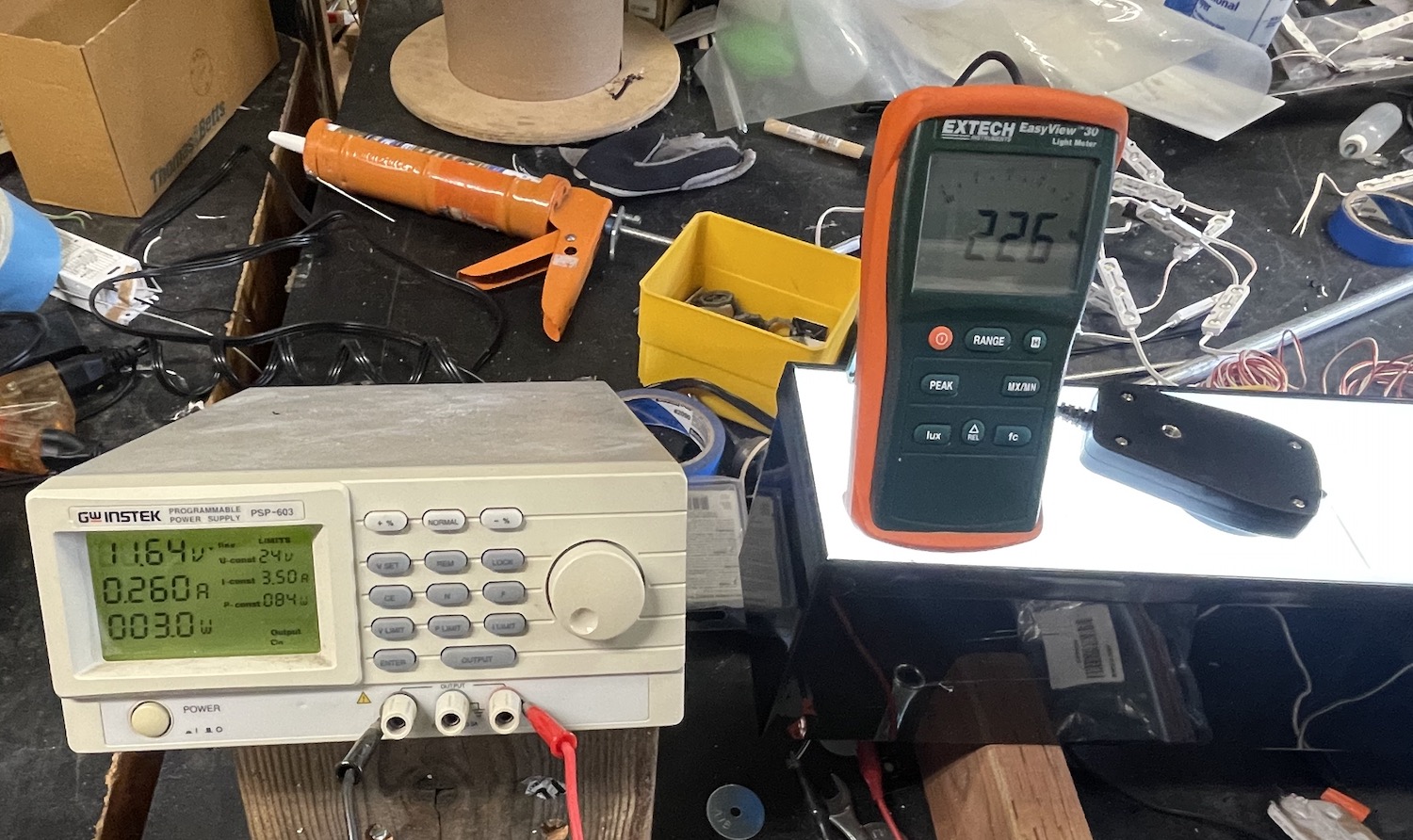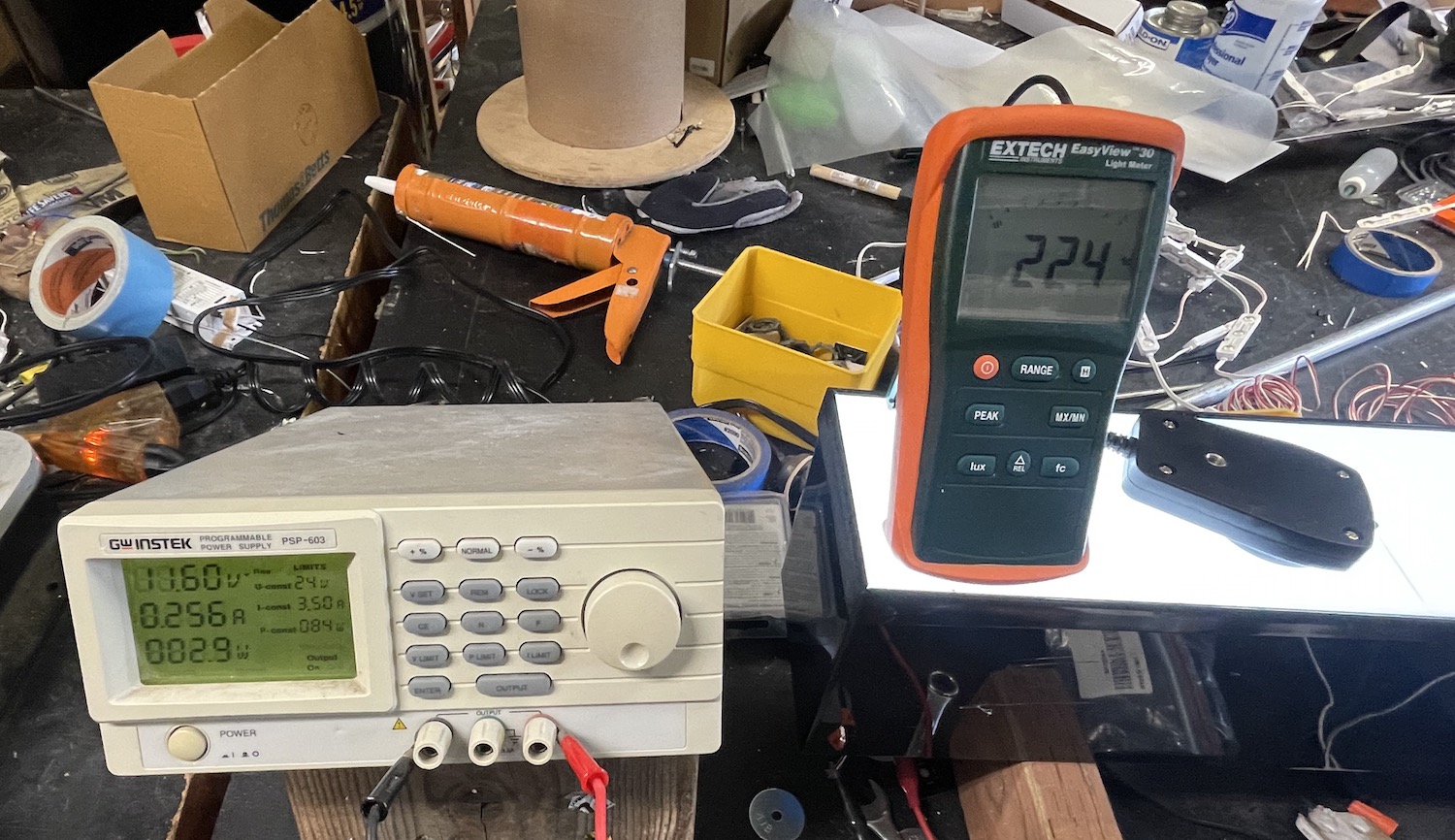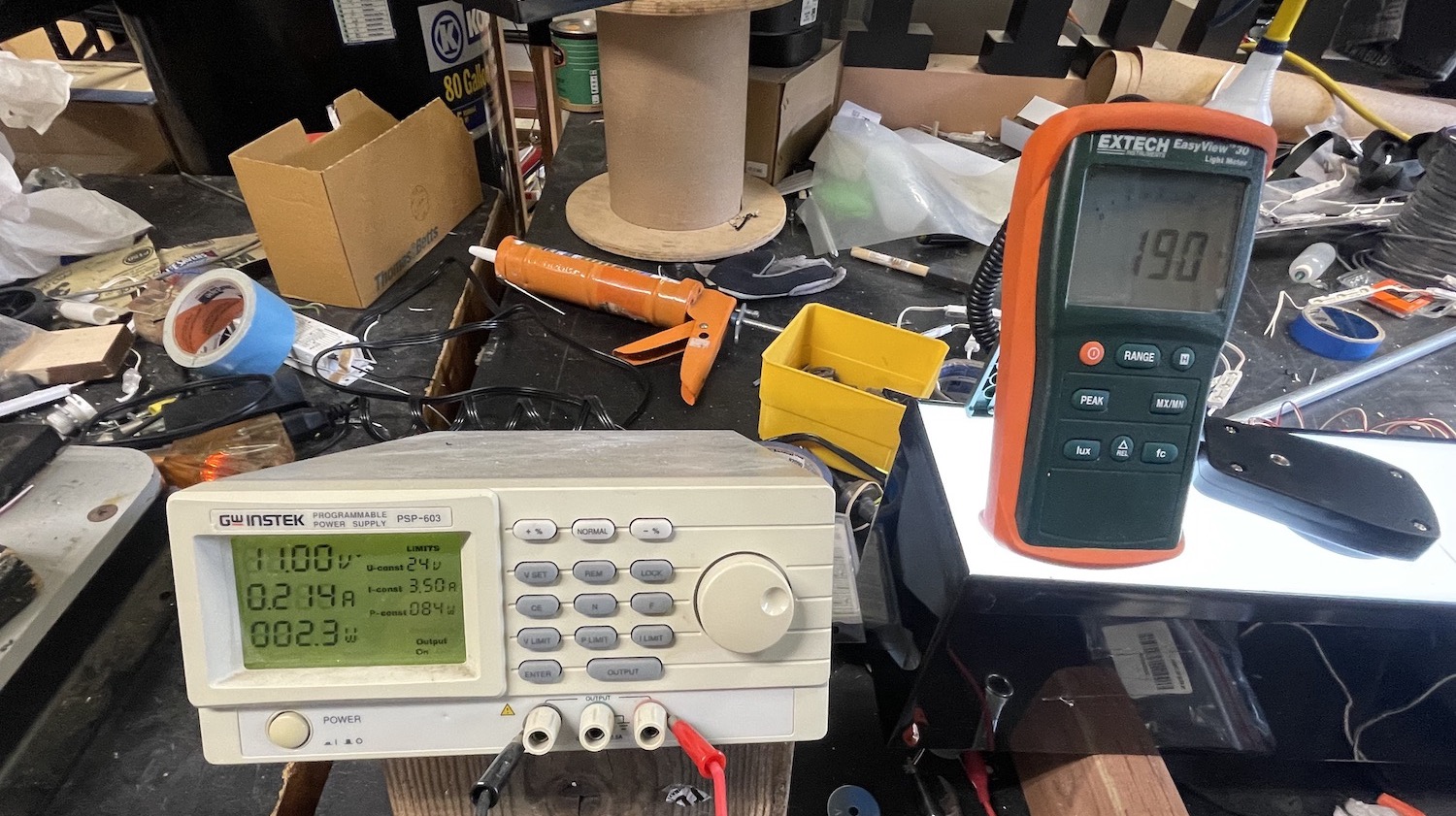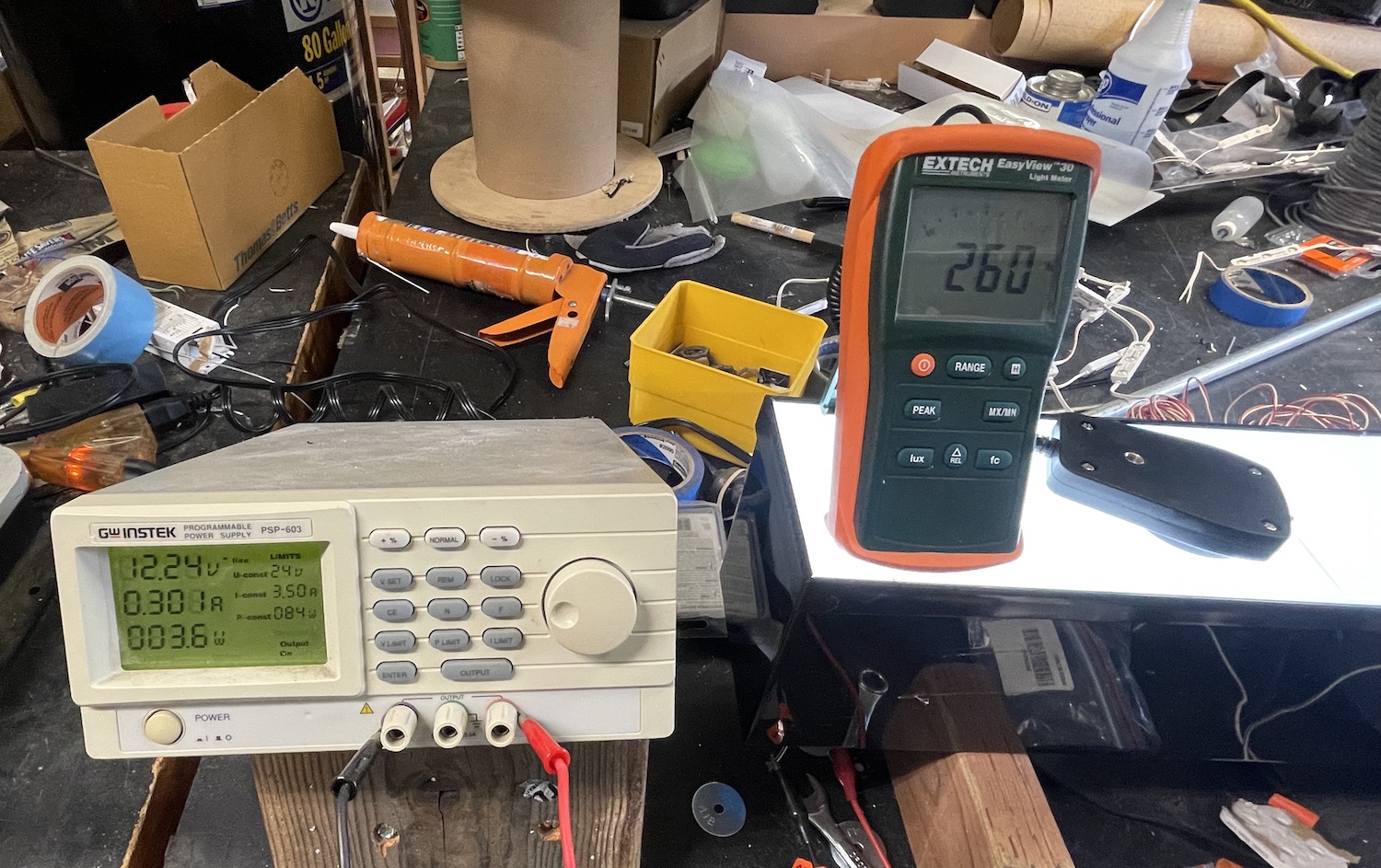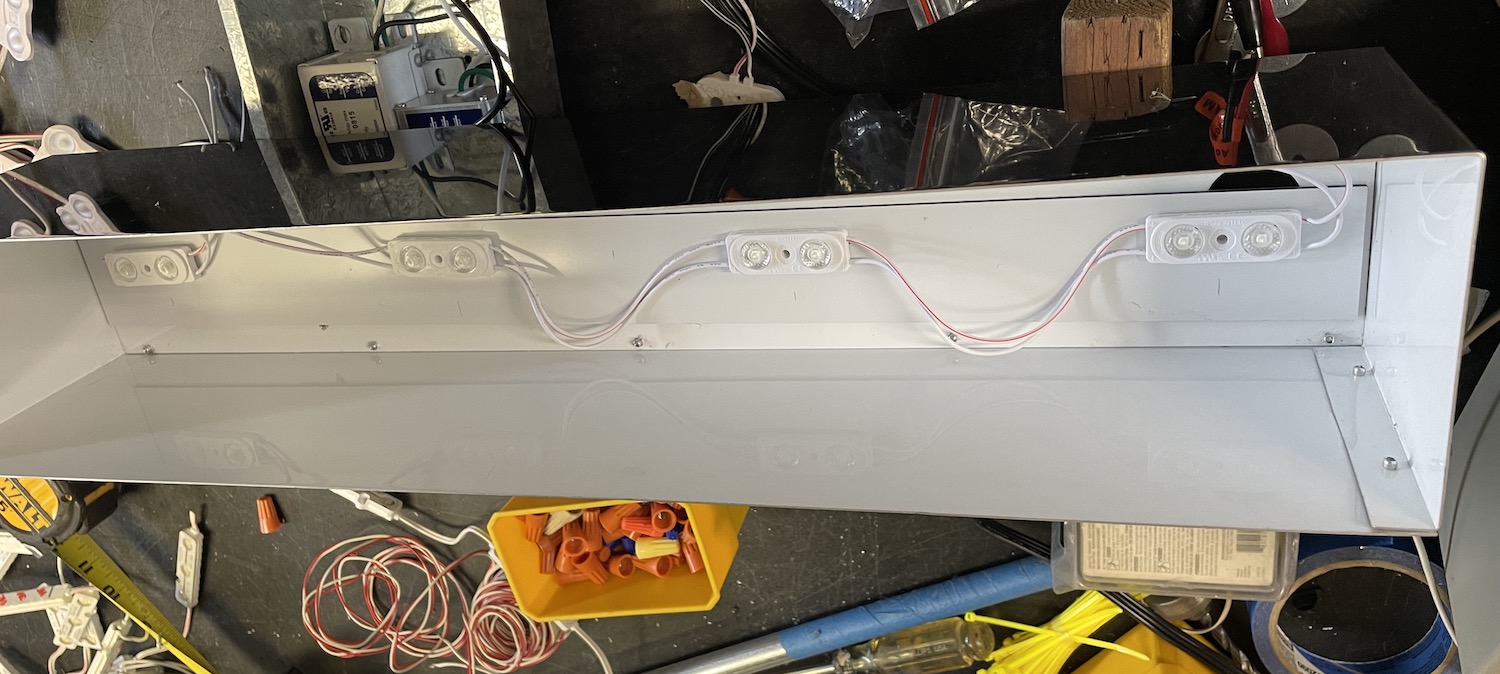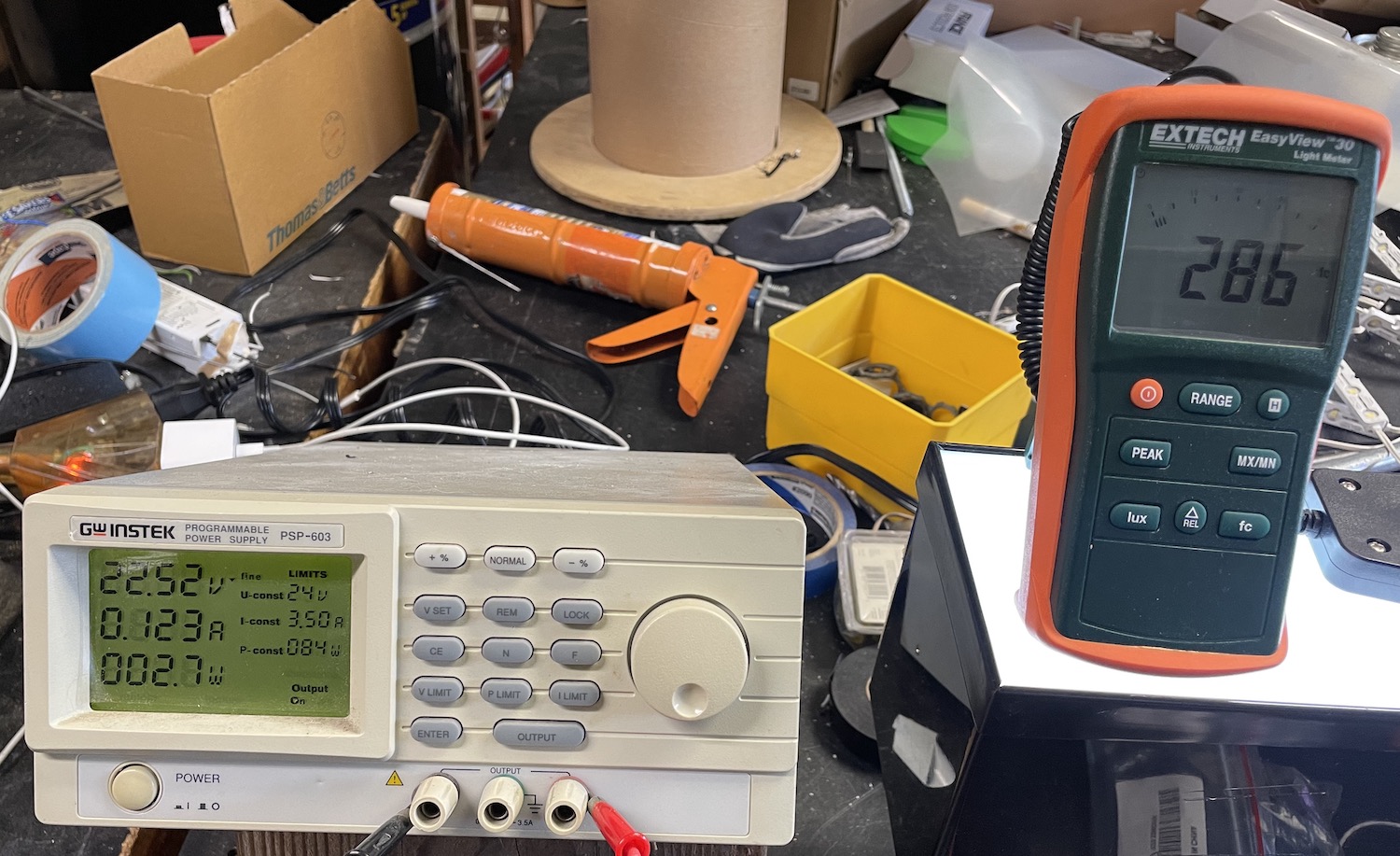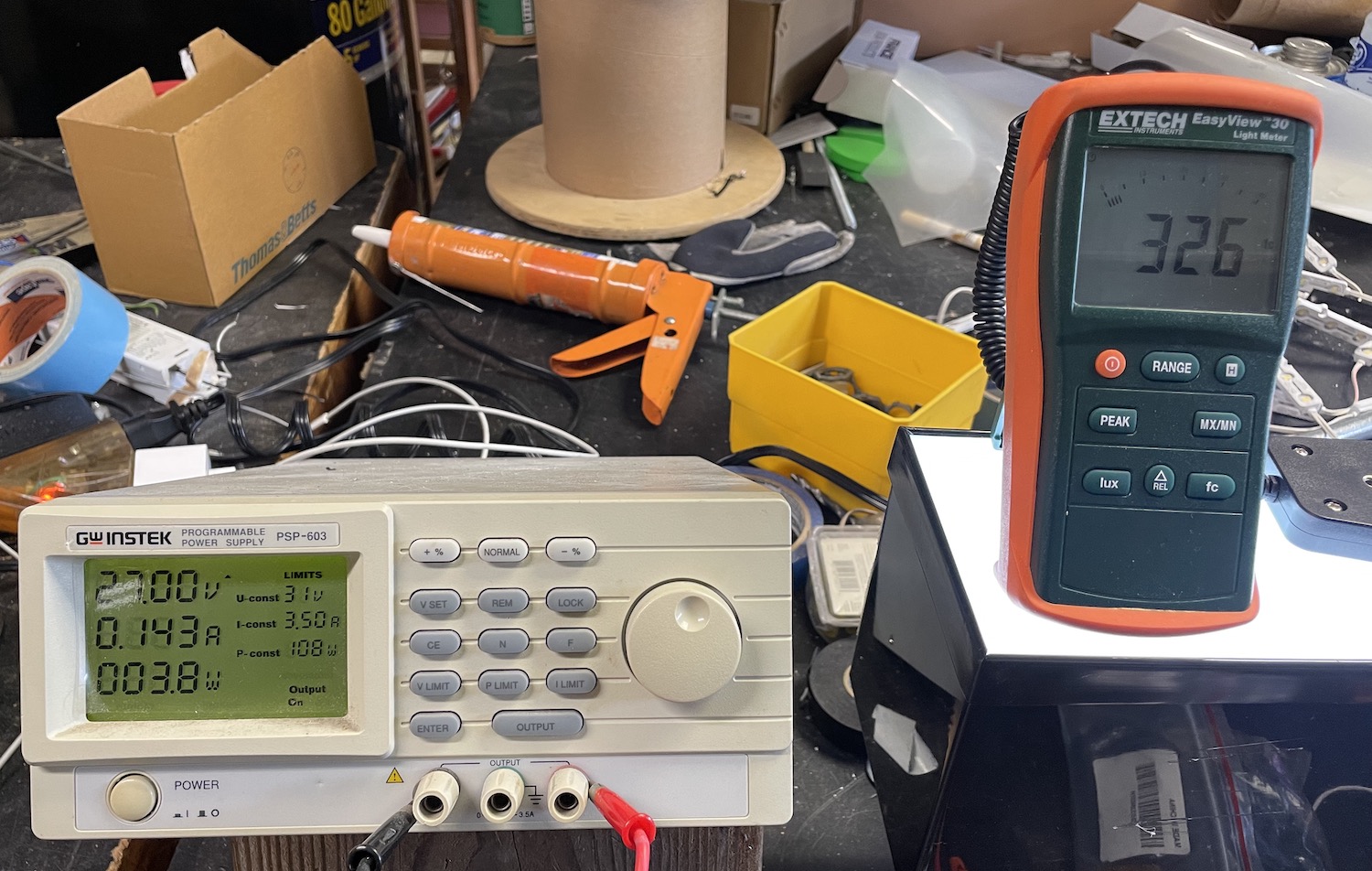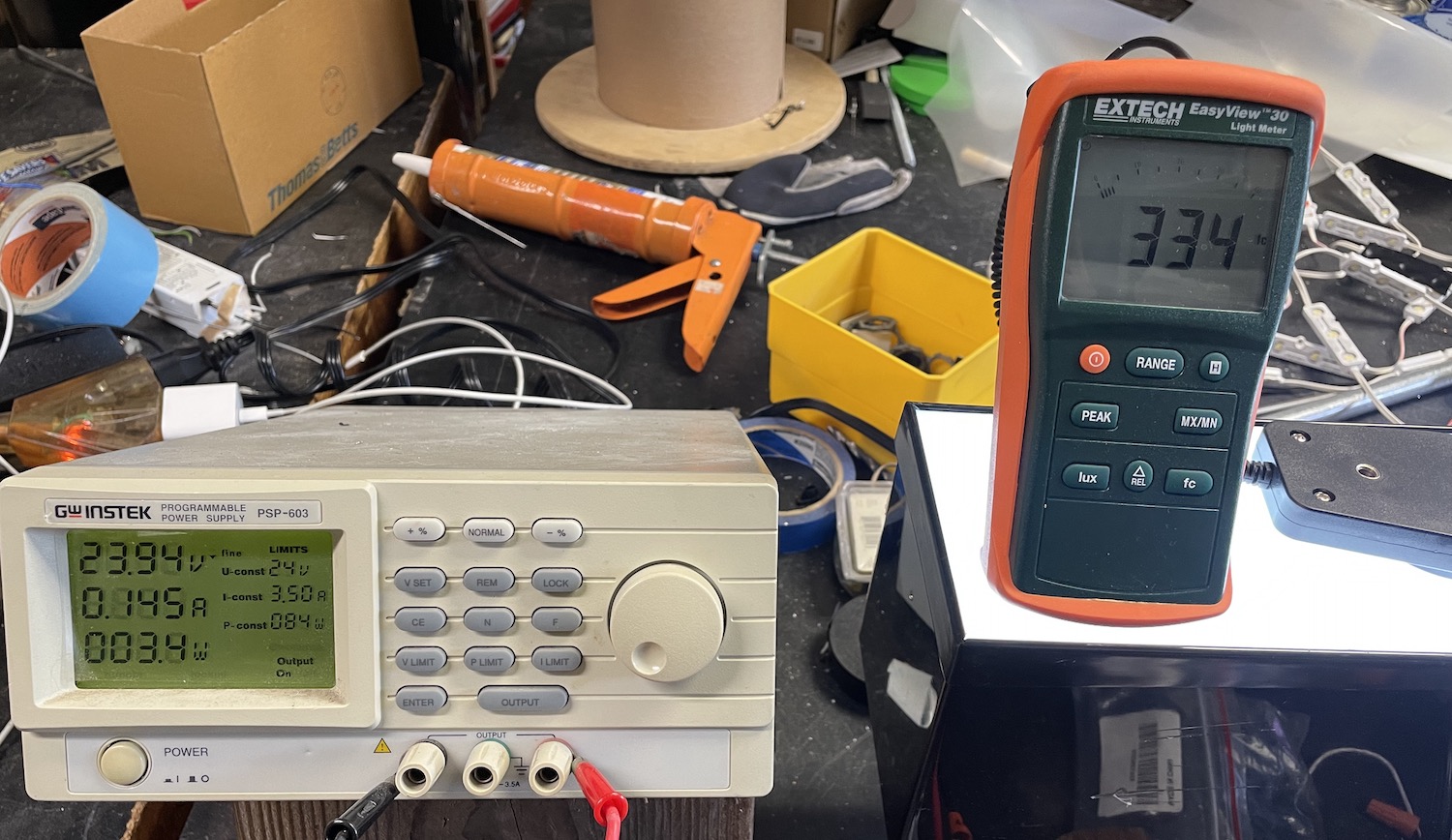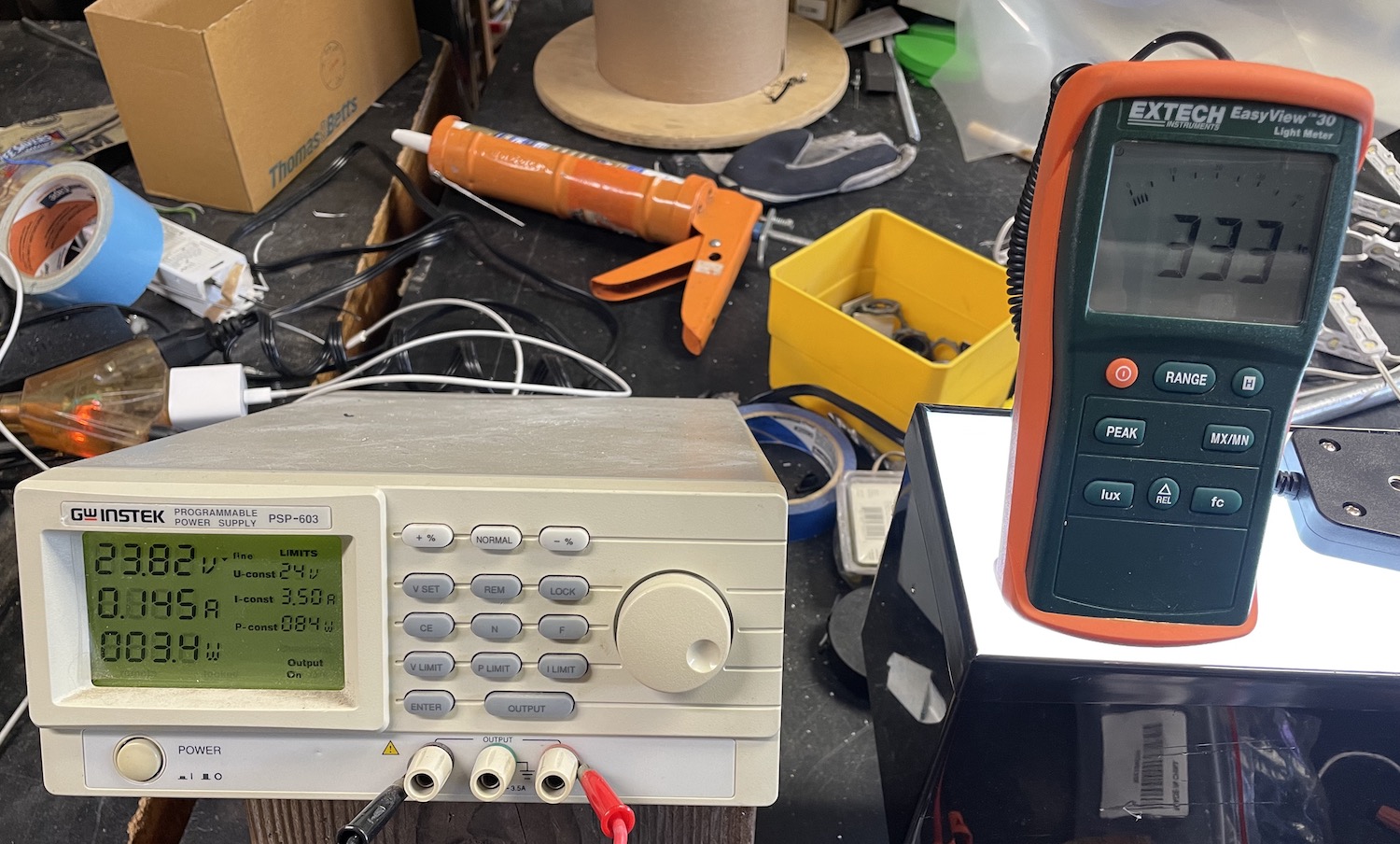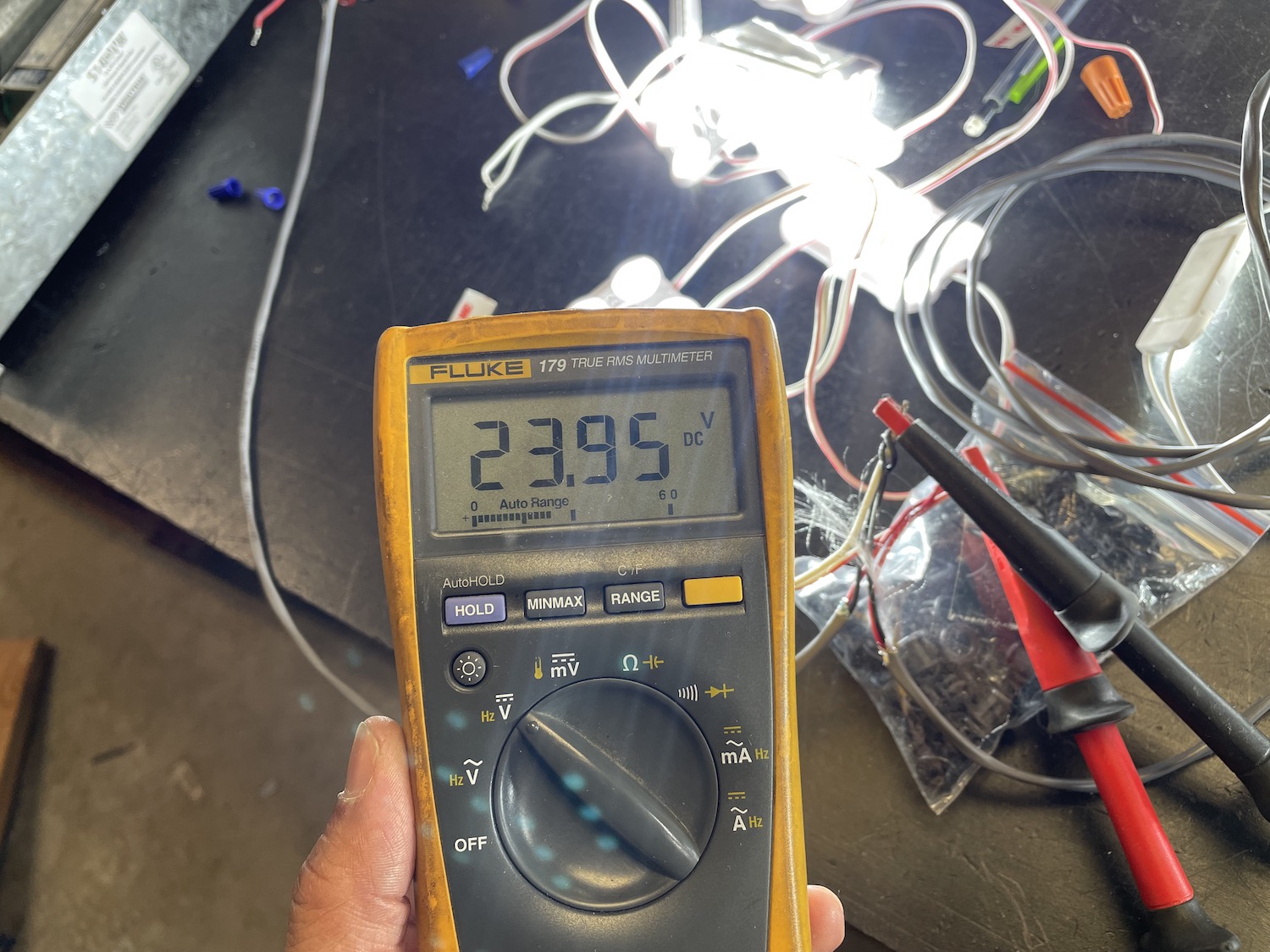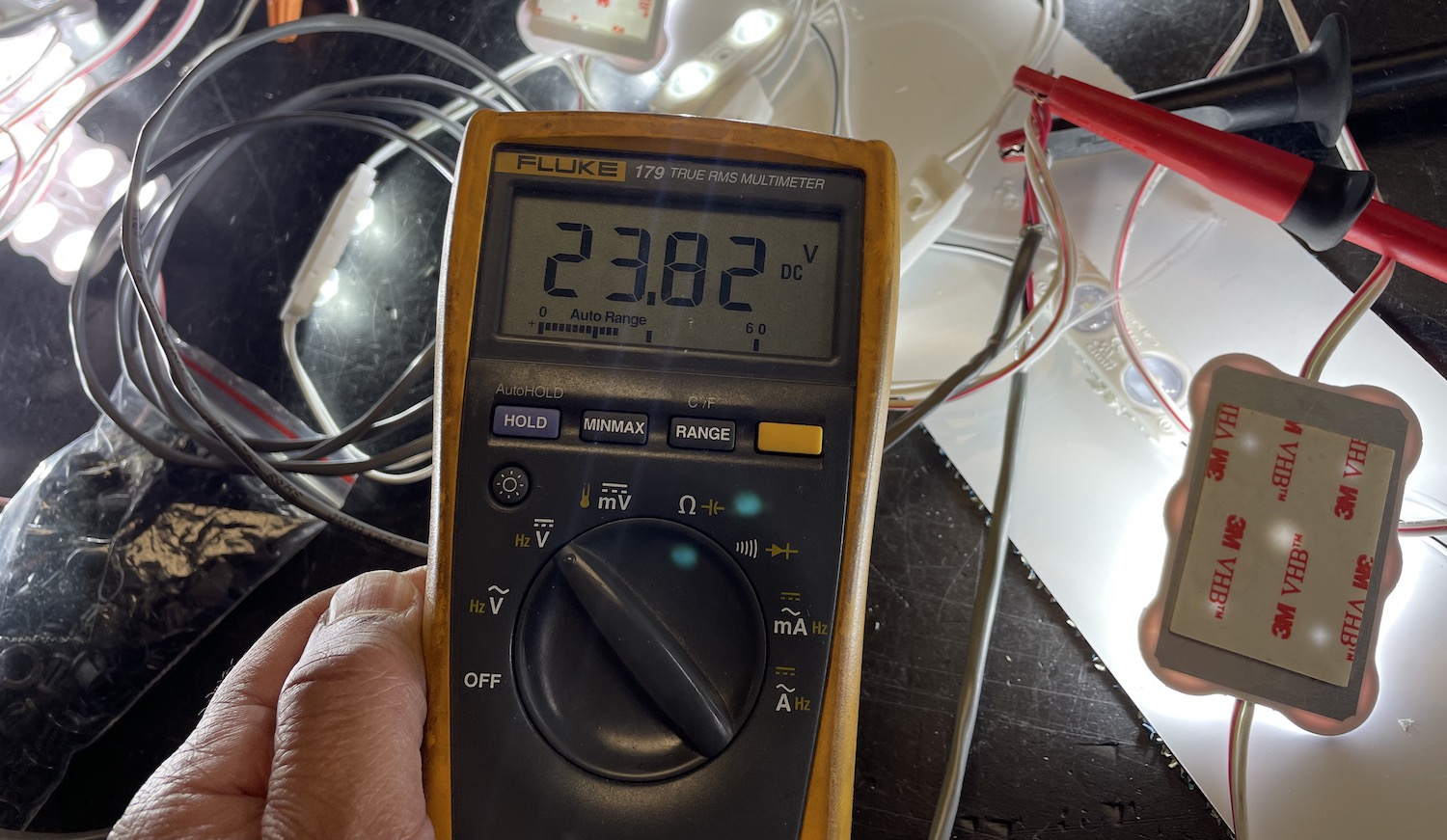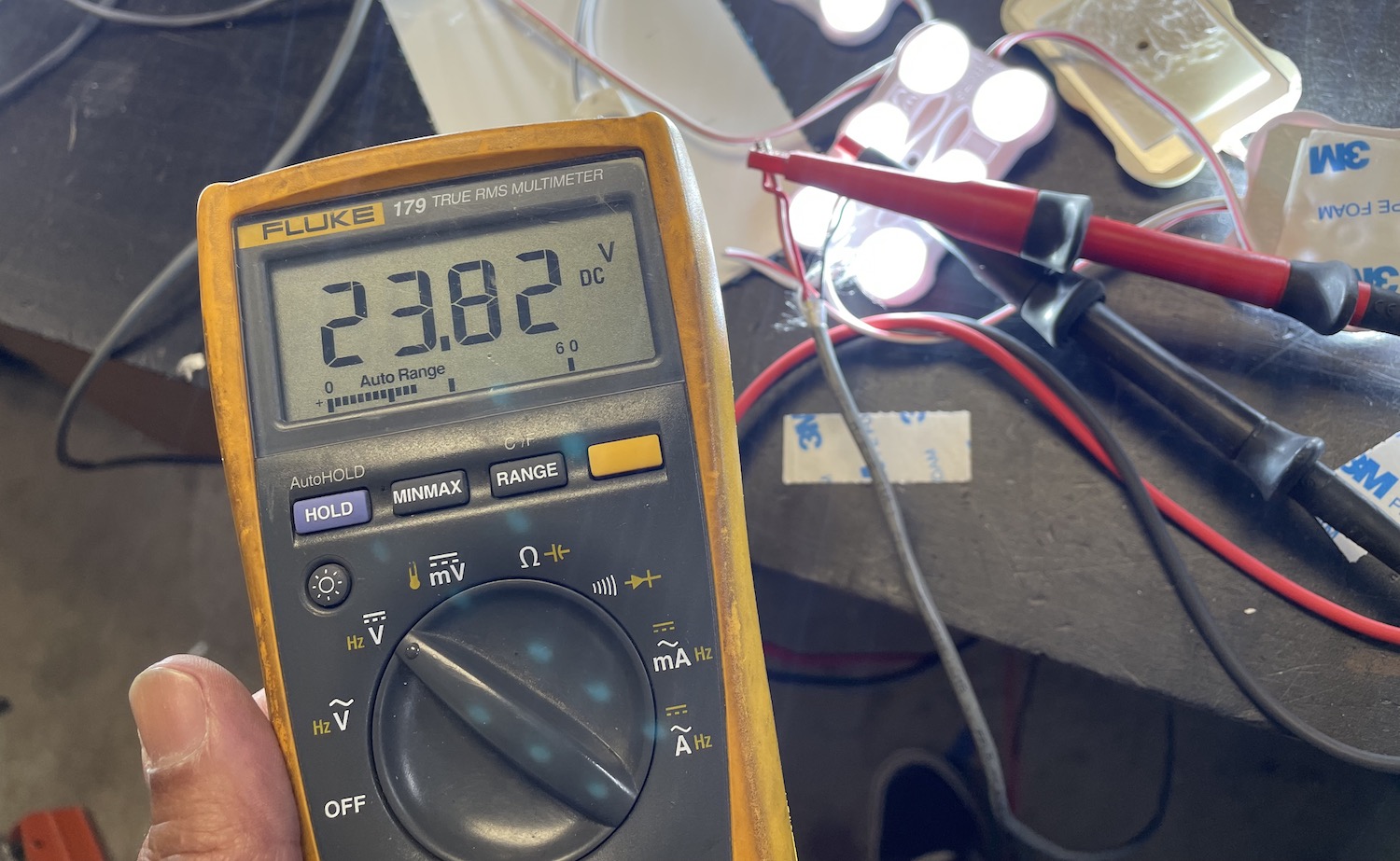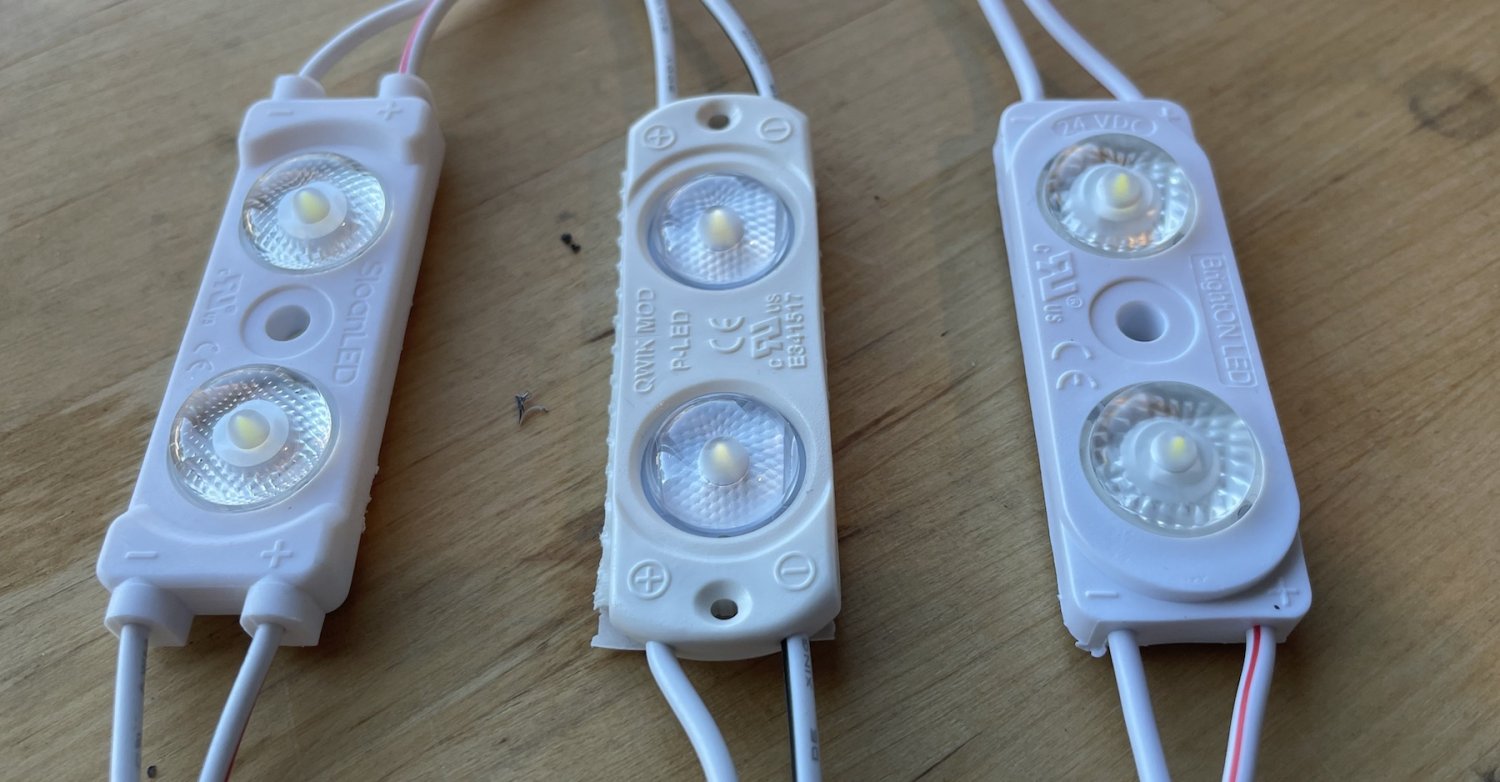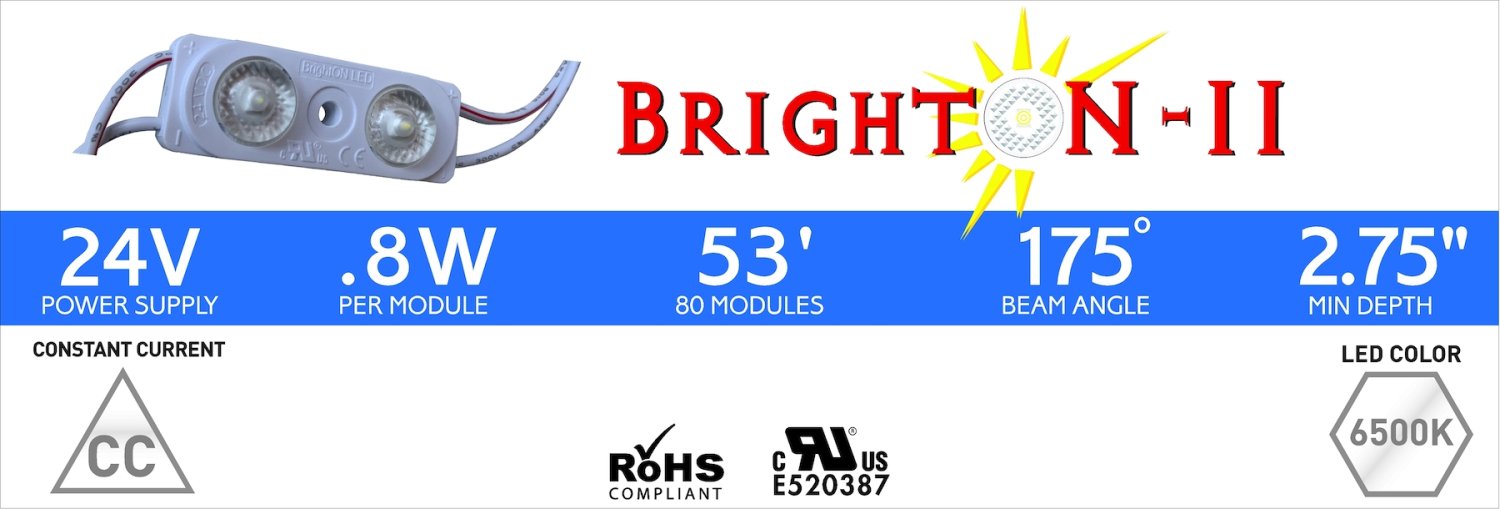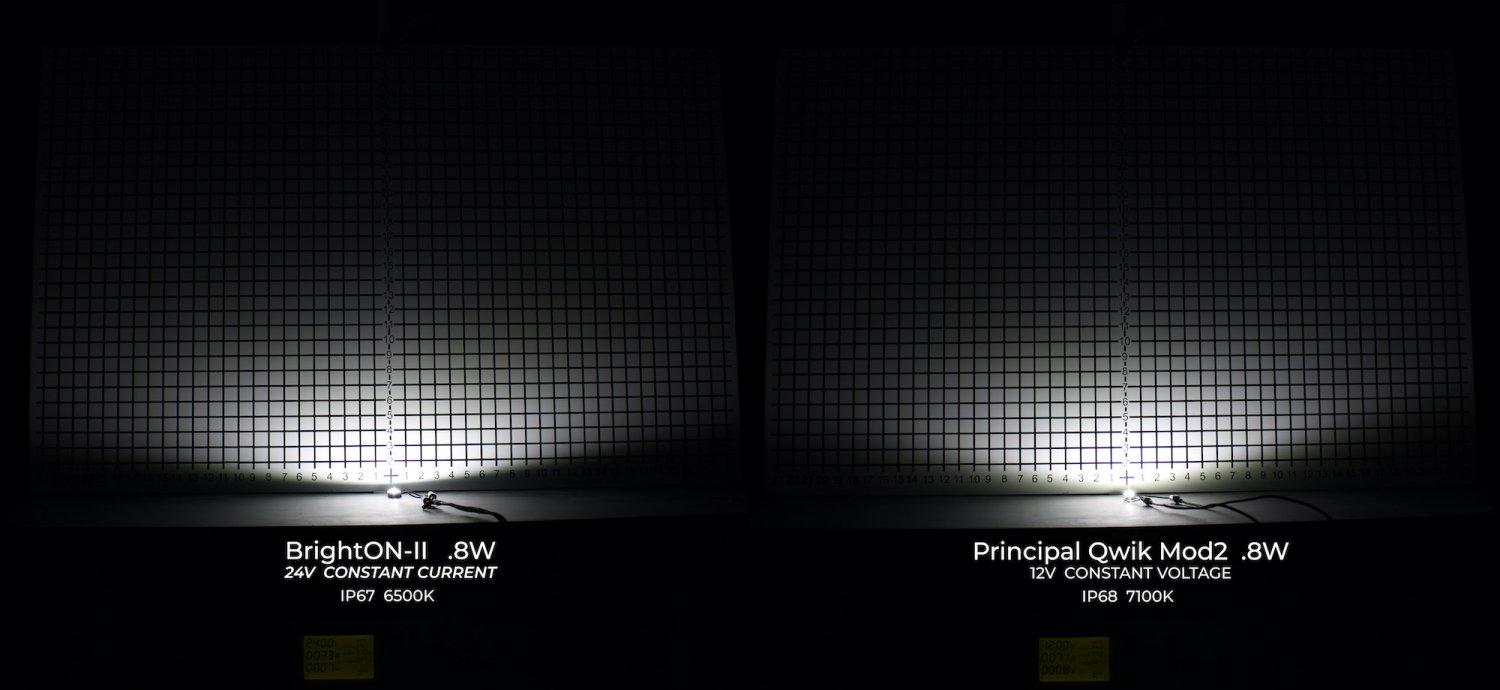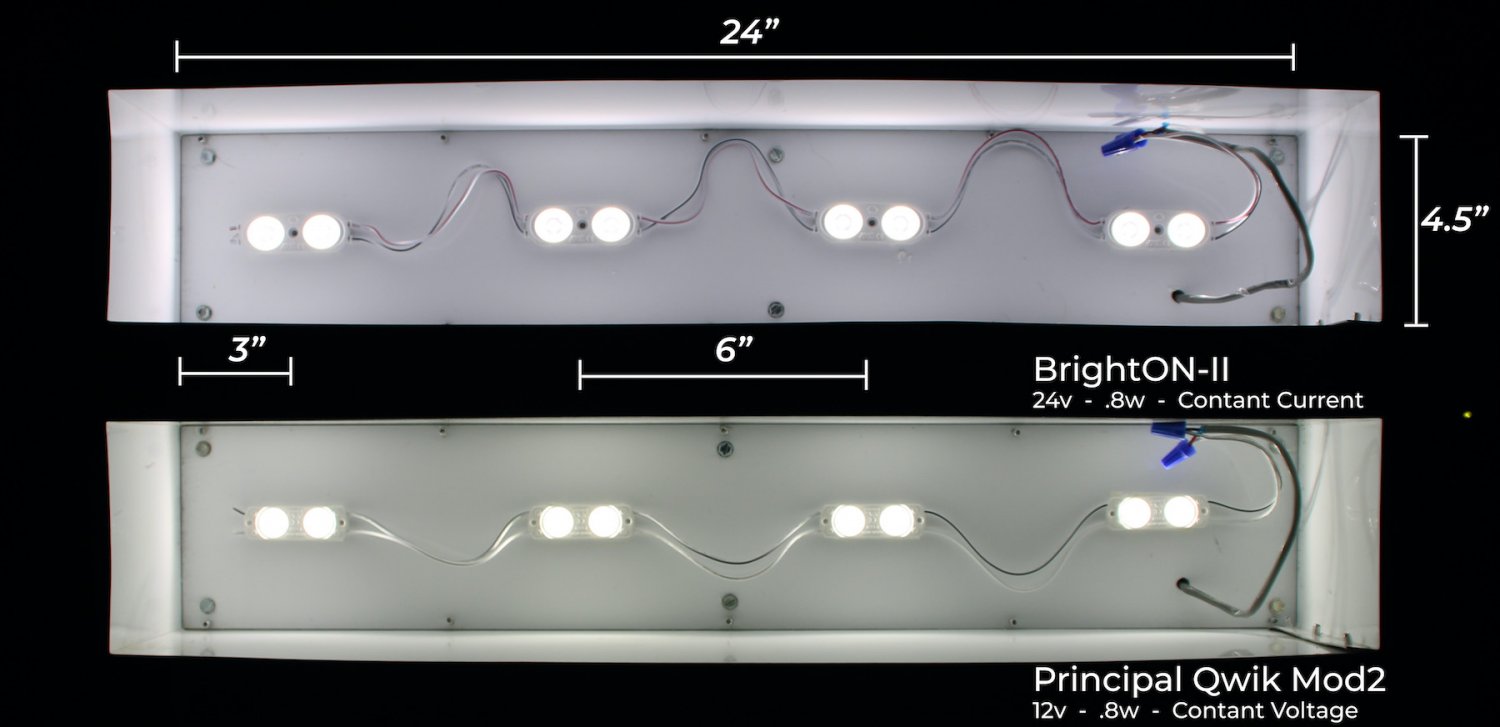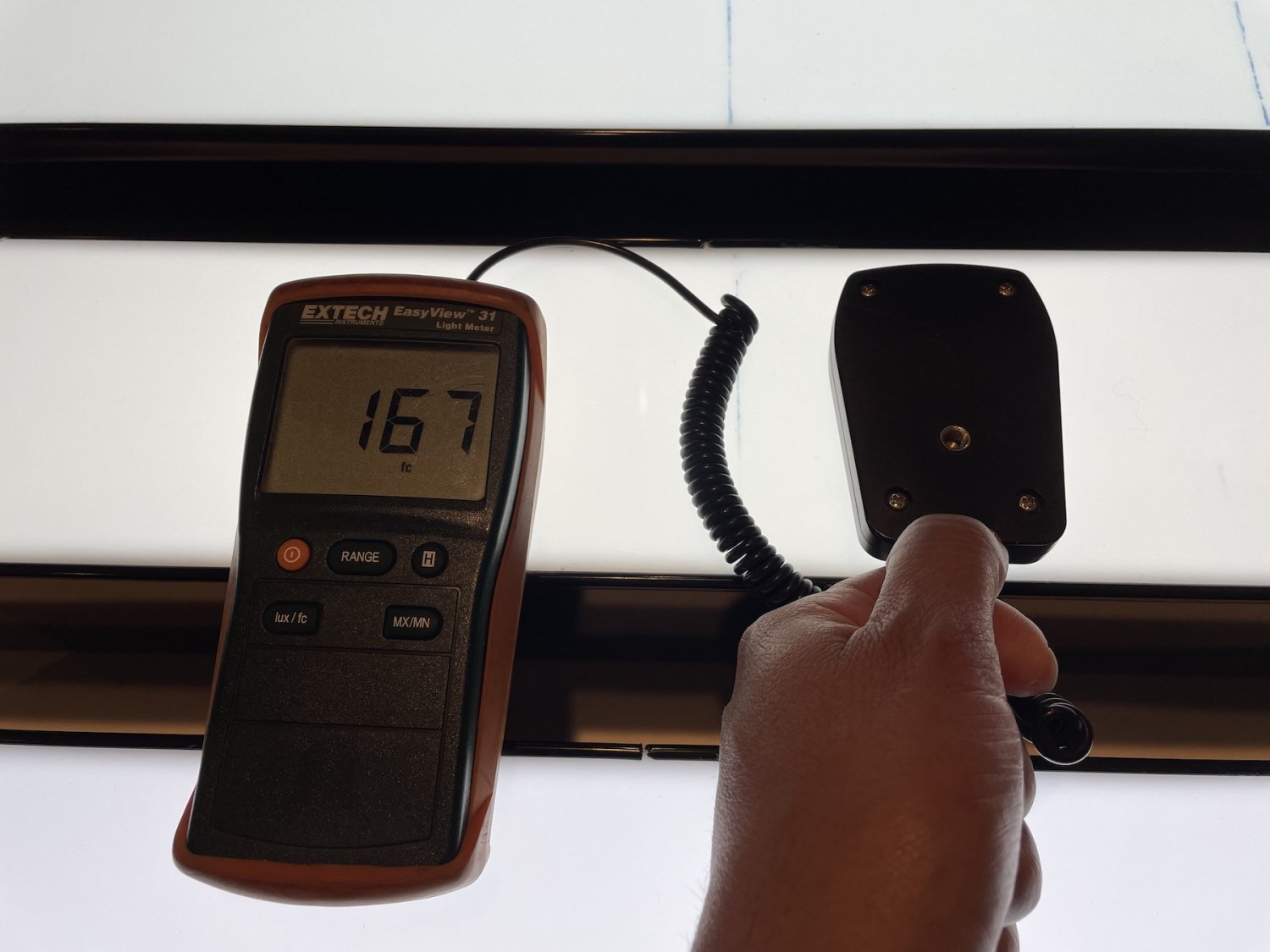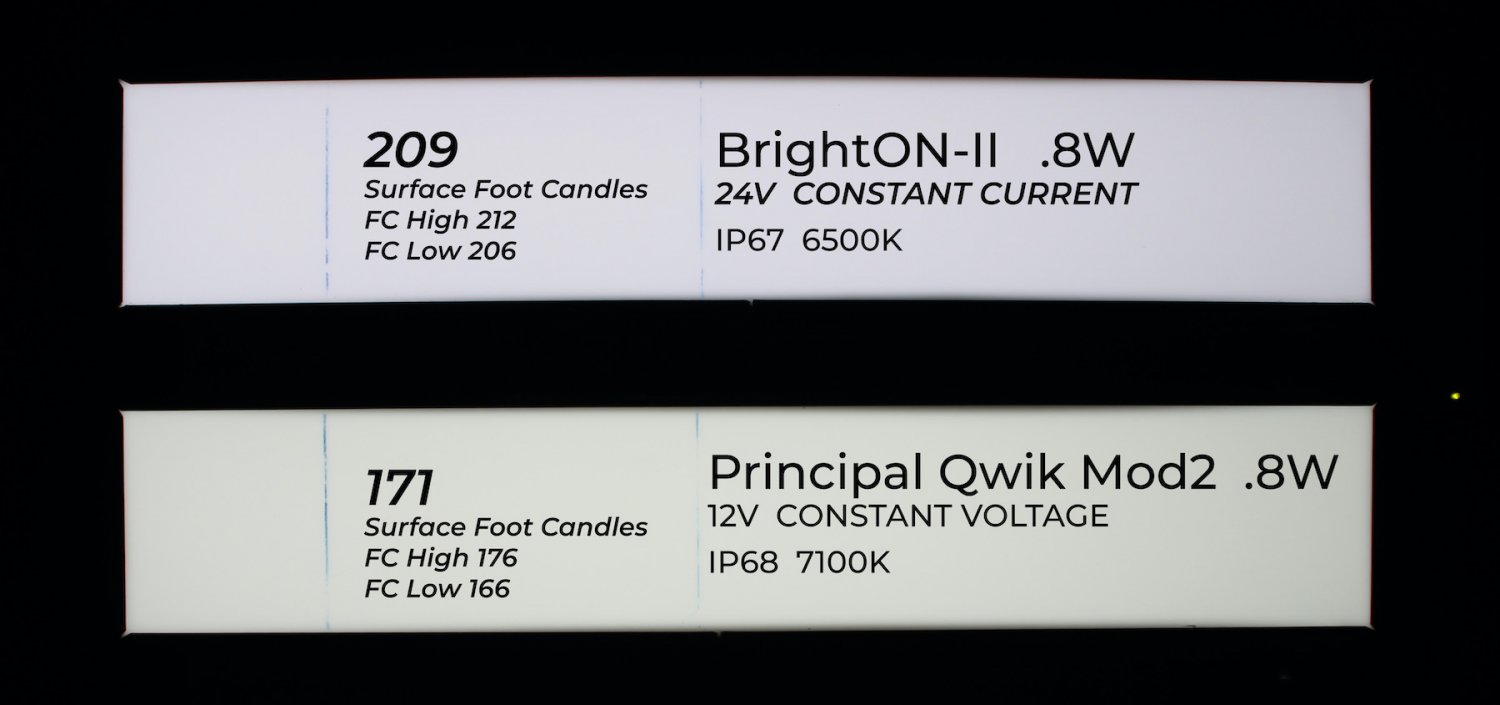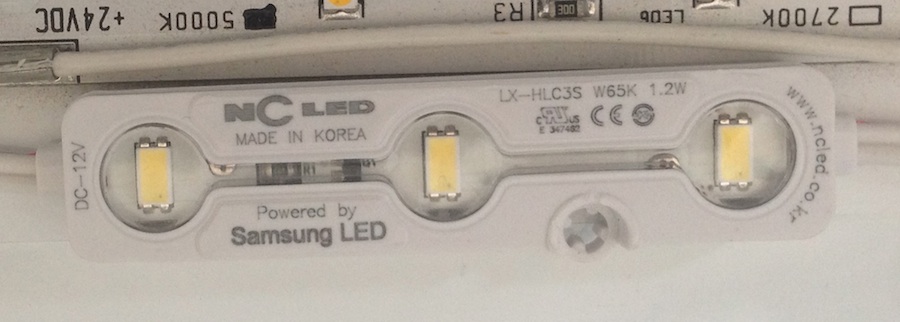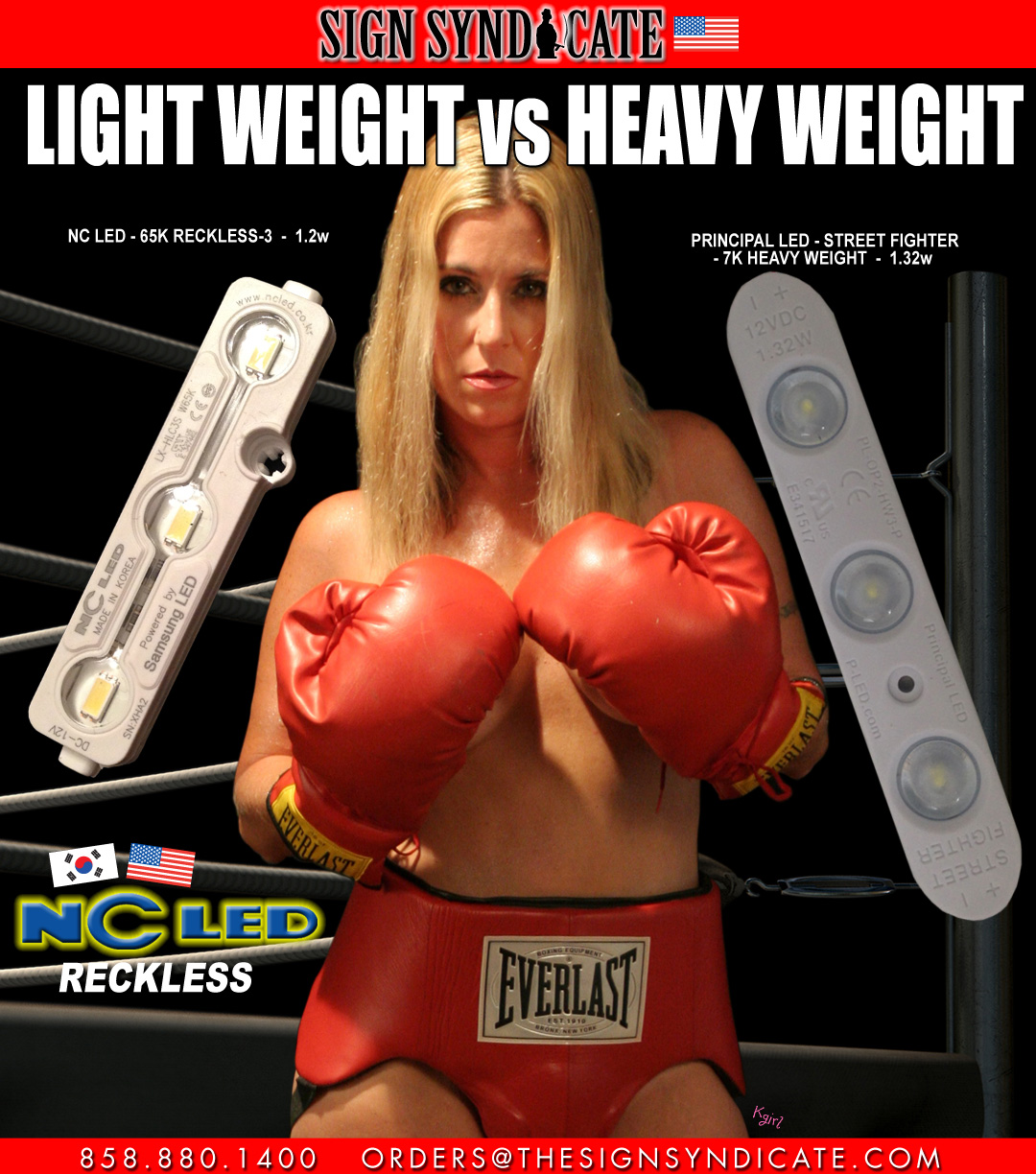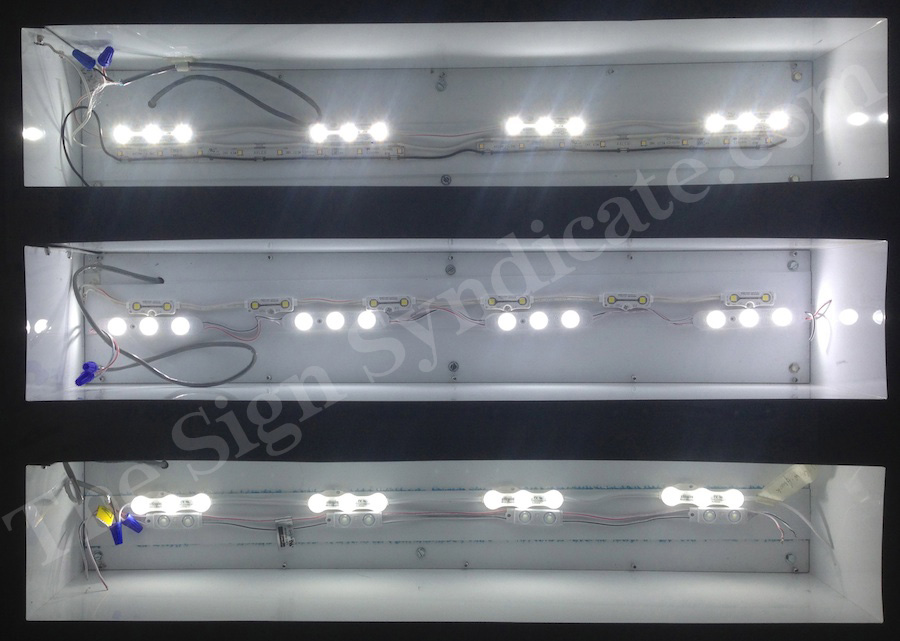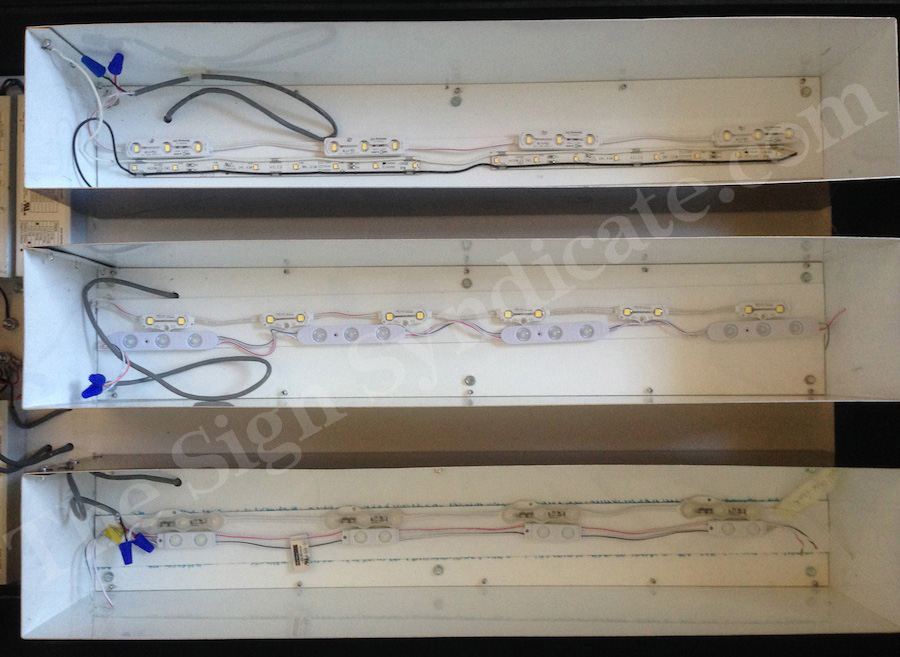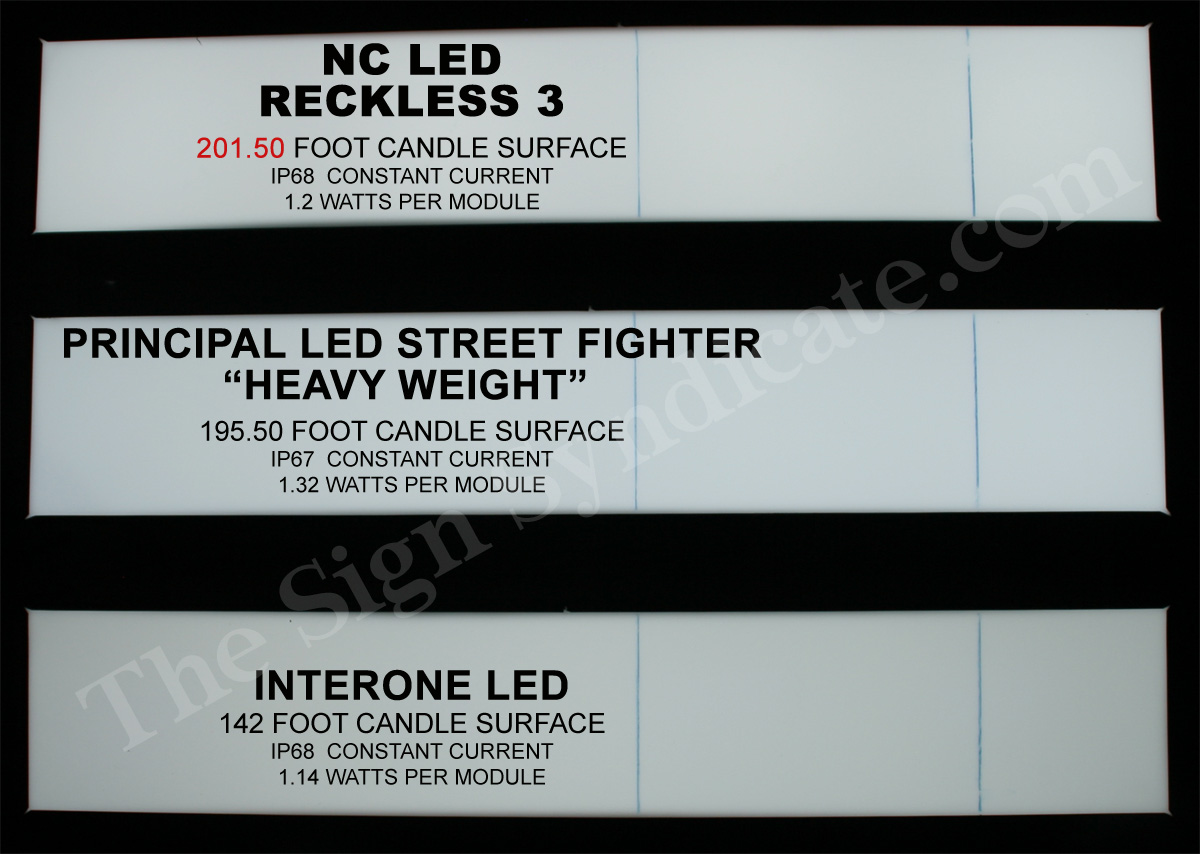ELECTRIC SIGN SUPPLIES
If You're Looking For Premium Electric Sign Industry Components From Trim Cap, LED's, Neon Supplies, Power Supplies, Pattern Paper. Then Please Visit Our Online Store or Feel Free To Call Us For Inquiries or Placing an Order!!
Buy Now
SIGN INSTALLER MAP
Looking for a fellow Sign Syndicate Company Member For A Sign Install or Maintenance Call?
Click Here
For Sign Company's Who Work As Subcontractors
Before You Work For A National Sign & Service Company You Need To Look At The Reviews Of These Companies Before You Work For Them. Learn When To Expect Payment From Them and What It's Like To Work For Them, The Good, The Bad, The Ugly. Learn and Share Your Experiences Yourself For Others
Click Here
Search the Community
Showing results for tags 'principal led'.
-
The BrightON-II Ruby Red vs Principal LED Qwik Mod Red ShootOut So, we got some interesting feedback from our last Shootout between the .8w 24V BrightON-II, .8w 12V Principal LED Qwik Mod 2, & .96w 12V Sloan's Value Line 4. Confusion First and foremost...We are from the Sign Industry as Fabricators & Designing and we will continue to build LED systems from that view point.... There seems to be a lot of confusion in the air with our industry as some were quick to say the comparison was bad because the BrightON II LED module was 24V compared to the rest only being 12V. There was also confusion when I explain that the BrightON II LED Module was way more light efficient. Let's take the first one. There is nothing about a 24v LED Module that makes it brighter over a 12V if they are both .8watts each, the only difference is 24v is double the voltage, but half the current of a 12v LED Module....just as a 12v LED module is half the voltage but double the current of a 24v LED Module. What's important about the 24v BrightON LED line is that they are built to last (and we have 12V LEDs too), that being said....we design for 24 volt system because it means the module is taking half the current through the system which means it's getting half the resistance and heat of a 12v LED Module. Lesser heat and resistance means longer life. LED's HATE heat! The second part, when I say Light Efficient, I don't mean it's "Energy Efficient" for the client. I'm saying the quality of the LED chips (Diode) is such a high quality that it requires very little power in for more light out. In other words the BrightON II Led Module, is producing more light for the same power as the Principal Qwik Mod 2, or lesser power than the 1 watt Sloan Value Line 4. This means the BrightON is built with higher quality. BrightON LED is building Quality, NOT Quantity. BrightON LED is building lighting components for Competitive Light, NOT....Usable Light. And it's producing more light being under driven, NOT overdriven to produce more light, hence the BrightON II .8watt produces more light than the .96watt Sloan Value Line 4. Alright, enough of that. Now we enter the .8w 24v BrightON II Ruby Red vs Principal LED's Red Qwik Mod 2. The Shoot Out Principal LED Qwik Mod 2 Red (Left), BrightON II Ruby Red LED (Right) The Benchmark Comparison Details Similar to the last comparison, not much changes. Both are contained in a 24" x 4.25" x 5" Channels. The faces are 1/8" 2283 Red by Plexiglas MC Grade. The BrightON II Ruby Red LED is .8watts per module and a 24volt module, the biggest difference is that the module is Constant Current, NOT Constant Voltage, the wiring is also 18 AWG. The Principal Qwik Mod 2 Red LED is also .8watts per module and is a 12V module with a contact voltage system. The wiring is 20 AWG which will have voltage loss for long long runs and jumps that are involved with Channel Letter lighting that will lead to dimmer lighting at certain points in jump from the Power Supply Both modules are spaced equally, 6" OC, 3" from the ends. The Results Well, the results are significant...... The BrightON II Ruby Red is significantly to say the least, WAY more Light efficient than Principal LED's Qwik Mod 2 Red. The BrightON Ruby Red has double the Luminance (Light on a surface) than the Principal Qwik Mod 2 Red. The Foot candles per watt are also double. If you had two signs with the same name "Rug Depot" and they were both side by side, the difference at night would be HUGE. You could even say we could space the modules of the BrightON Ruby Red out much farther to use lesser modules and the sign would still be brighter and the Qwik Mod 2 Red and the Cost of Operation would be much less. We could even be so bold to say that we could down size the wattage of the BrightON Ruby Red to a .6w or .5w module and still be brighter than the Principal Qwik Mod 2 Red. Constant Current vs Constant Voltage Basics As explained before... Constant Voltage Let's talk about the Constant Voltage LED System and how it affects Sign Applications and Projects. CV LED modules only use Resistors to protect the system, this is minimal. Sometimes LED Power Supplies can kill these Systems especially when not loaded right. A lot of LED PSU's (LED Power Supply Units) vary in the voltage out, or secondary. Some Secondaries can output about 12.15 to 12.24, sometimes slightly higher. That fraction of a volt makes the LEDs run hotter and the brightness of the LED goes up beyond the intended purpose. Also, if you light a string of say 25 LEDs, the first module takes a bigger hit than the last LED module on the string, also the light output of the first module is brighter than the last. You will have inconsistent lighting of LED modules on long strings when it comes to CV Modules. Fractions of a volt dim the LED modules from string to string or Jump to jump. Constant Current With Constant Current LED systems, each module has a current regulated by having an on board CR Chip. What this does is govern the current, in short....it's extra protection. How it differs is, unlike CV LEDs, where the last LED module on a string of 25 will be just as bright as the first module on that string. Also, going over the intended voltage will not affect the light output or life that it will with CV LED. CC LEDs assure consistent brightness throughout your sign, and longer life than a CV LED Module where they can be overdriven Loading Advantages With the 24v BrightON II Ruby Red LED modules, you can load 120 modules on a single channel 96watt France Lighting Solutions Led Power Supply. On a 12v system you are limited to a single 60w channel which will give you about 63 modules being on the safe side. In Closing The Results Speak for itself.... This is not to take away from what light the Principal Qwik Mod 2 Red produces, it's decent, it's your average red creating usable light. But it's Constant Voltage and it uses 20AWG wire for it's system which will further voltage loss when used for channel letter lighting along with dimmer light with that voltage loss. The BrightON Ruby Red is just a High-End module producing premium light for the same power compared to most modules on the market today. I'll say again....first and foremost...we are from the Sign Industry as Fabricators & Designers and we will continue to build LED systems from that view point....NOT, the other way around If High-End, Long Life, Competitive Lighting is what you want to integrate into your Sign & Lighting Projects for your clients, then the BrightON LED line is what you want...
- 2 replies
-
- principal led
- brighton led
-
(and 2 more)
Tagged with:
-
So….What makes the High-End BrightON LED Series Kick Ass? Well.....we'll show you! Let’s go over a few quick specs first and how they differ from a few of the major brands out on the market right now. For this purpose we compared the BrightON II to Principal’s Qwik Mod2, and Sloan LED’s Value Line 4, or VL4 as most know it as. The Shoot Out Sloan LED Value Line 4 (Left), Principal LED Qwik Mod (Center), BrightON II LED (Right) The Benchmark Comparison Details Each Channel is 24” L x 4.25” W x 5” Deep. Why 4.25” Width? Well, because the standard told you that each stroke of Neon should hold for 4”, at 6” or 8” you would add another. The acrylic face is just a simple 1/8” #7328 MC White. The module spacing for all modules is also the same at 6.5” OC The first thing you should know is that the BrightON II is Constant Current Module, NOT Constant Voltage. Both the Qwik Mod2 and VLT 4 are Constant Voltage. We’ll get back to this part in a bit, and maybe we will follow through in a separate article when it comes to CC vs CV and what the pro’s and con’s are. The BrightON II uses 18AWG for the module system wiring, the Qwik Mod2 and VL4 both use 20 AWG, so they will both incur some voltage loss in longer string strands, especially if it's s shop who likes to load 30 to 50 modules on a single string, this 20 AWG wiring doesn’t not help a Constant Voltage LED System, this works against it. The BrightON II is 24V, the Principal LED Qwik Mod 2, and Sloan VL4 LED modules are 12V. With 24V you have half the current flowing across the system, which in turn means less heat and resistance than a 12V system. This also means, longer life. The BrightON II is .8 watts per module, the Qwik Mod 2 is also .8 watts per module, the Sloan VL4 however is a higher wattage module at .96 watts. Usually higher wattage means higher light output. The Surface Lighting Results Since we’re in America, we’re using Foot Candles to measure Light Output, in a measured off area on each acrylic face (6” x 4.25”) we use an ExTech Light meter to measure the High and Lows, just like we have done in all past Benchmark Lighting Comparisons such as The Great White Hope, The Red Light District, & Blue Light Special. We add both measurement (High's & Low's) numbers together and divide by 2. i.e. FC High of 232 + FC Low of 226 = 458 FC. 458 FC / 2 = 229 FC, or 229 Foot Candle Average. As you can see, for the same power modules, the BrightON II is 29% brighter on the sign surface (Luminance), and 17% brighter than the higher wattage Sloan VL4. Lastly, let’s look at the Foot Candles Per Watt. This is the amount of light per watt on the acrylic or sign face surface. This illustrates the efficiency of each module, or light output per water being consumed. Depending on the quality of the chip, some will produce more light than others consuming the same amount of power. The BrightON far exceeds the Principal Qwik Mod 2, and the Sloan Value Line 4 in light efficiency. Constant Voltage Now let's talk about the Constant Voltage LED System and how it affects Sign Applications and Projects. CV LED modules only use Resistors to protect the system, this is minimal. Sometimes LED Power Supplies can kill these Systems especially when not loaded right. A lot of LED PSU's (LED Power Supply Units) vary in the voltage out, or secondary. Some Secondaries can output about 12.15 to 12.24, sometimes slightly higher. That fraction of a volt makes the LEDs run hotter and the brightness of the LED goes up beyond the intended purpose. Also, if you light a string of say 25 LEDs, the first module takes a bigger hit than the last LED module on the string, also the light output of the first module is brighter than the last. You will have inconsistent lighting of LED modules on long strings when it comes to CV Modules. Fractions of a volt dim the LED modules from string to string or Jump to jump. Simulation We simulated this small sign using 18 AWG wiring hooked up to measured LED Strings. We took a 12V PSU and hooked it up to three groups of LED Strings with Similar Loads to represent individual channel letters I also drew up a illustration to show you what we did for our benchmark test, and what his benchmark is representing. If you look at PSU 1, you'll notice that like most of how these signs are installed, the PSU goes to the first two letters of a group we'll call Jump 1, which is about 5' to 6' secondary cable length coming from the LED PSU, and extension or jumper to the second group also 6' cable length, and to the third also 6' from Jump 2. We took a volt meter and measured what the voltage was at each jump point. Keep in mind, this much smaller than how signs are installed in the field, the secondary wiring used to crimp led string in letters then to jump points ins much longer as we all know, jumps are also much longer. But this is a simple bench mark, we're not going extreme. Jump 1 Voltage Measurements 11.89 Volts Jump 2 Voltage Measurements 11.66 Volts Jump 3 Voltage Measurements 11.62 Volts So, now that we have our voltage measurements of each jump, we'll use those voltage numbers to illuminate a channel to show you how the light output is affected using by the voltage drops on a CV system. We used a LED power Supply where we control the voltage, also using a ExTech Light meter. Jump 1 @ 11.89 Volts = 240 Foot Candles Jump 2 @ 11.66 Volts = 226 Foot Candles Jump 3 @ 11.62 Volts = 224 Foot Candles Like I said, this is a smaller version than what can happen in the field of installation where there is longer runs and jumps of secondary cable. It's common to see 11volts at some points or jumps. If we take this power supply down to simulate 11 volts, the light output drops to 190 Foot Candles. Now let's go the other way, let's go 12.24 Volts. 260 Foot candles, and climbs with each fraction of a volt up. Not good for LED Modules Constant Current With Constant Current LED systems, each module has a current regulated by having an on board CR Chip. What this does is govern the current, in short....it's extra protection. How it differs is, unlike CV LEDs, where the last LED module on a string of 25 will be just as bright as the first module on that string. Also, going over the intended voltage will not affect the light output or life that it will with CV LED. CC LEDs assure consistent brightness throughout your sign, and longer life than a CV LED Module where they can be overdriven Let's show you the second part to this illustration and benchmark The 24V BrightON II Content Current LED Module Simulation Jump 1 Voltage Measurement 23.95 Volts Jump 2 Voltage Measurement 23.82 Volts Jump 3 Voltage Measurements 23.82 Volts (No Change) Now for the light output Jump 1 @ 23.94 Volts = 334 Foot Candles Since Jump 2 & 3 voltage measurements @ 23.82 Volts the light output is the same at 333 Foot Candles The drop in light was so minimal with a fraction of a volt it took us going down to 22.5 volts to see any kind of significant drop in light. Let's go the other way and drive the string to 27 volts. No affect on light output There has been a lot of questions about CC and CV LEDs in our industry and how it affects signs in the field, so I hope this answers some of those questions. This is why the High-End BrightON LED Line really KICK ASS! The complete LED line is Constant Current, both 24V & 12V Modules, The BrightON II, IV, and SunFire are all 24V. 24V allows users to load more LEDs on a single channel / PSU Unite to 96Watts over a 60W Channel / PSU. You also have half the Current, Resistance & Heat of that of a 12V system. As you can see from the comparison above, you get more light for the same power as other LED manufacturers and at times higher wattage modules. That's Efficiency! The BrightON LED line is also very Under Driven, where as there drive theirs to peak to achieve certain light output, and this will lessen LED Module Life.
-
With Principal LED and Sloan's V-series (value line) LED lines hitting the market at extremely low pricing I noticed a surge in shops literally flocking to save on peanuts. Here's a warning, be weary....It seems like Principal LED has taken a large step back in LED module quality as all their LED modules have gone all Constant Voltage.....no longer Constant Current. Sloan's newest Value 4 line....the 2LED Module is now .96 watts per module with modest light output for that power....this module is also Constant Voltage Not Constant Current. My thoughts on Sloan is for a high wattage module for modest light, it means the chip quality is not very efficient (Light output for power in). They're having to pump in more juice to get more light. More power means more heat, more heat is what kills LED life. Constant Voltage Modules have no current regulation, their dependent on resistors and light output for the first module on a string is brighter than the last on that same string. Constant Voltage Modules have a much shorter life than a current regulated Constant Current LEDs, where all modules on a string are equally bright. An efficient LED chip will put out more light for lesser power, the lesser the power the longer the life. Hold on to those long warranties....if they're still valid. You'll have a lot of paperwork to fill out and keep track of Sometimes companies get so large they end up using their name to sell products for products that use to be better.... Just some thoughts and opinion
-
The BrightON-II LED .vs The Principal Qwik Mod 2 LED So....we've been getting lot's questions on how our New High-End BrightON II LED compares to The "New" High Efficient Principal Qwik Mod 2 LED Well, we did a quick "side by side" benchmark comparison to find out. They have some basic similarities. • .8 watt modules • Both 170˙/175+ Optics • Both have Aluminum PCB We compared both LED modules and placed them in 24" x 4.5" x 5" channels using a standard Plexiglas MC white #7328 white acrylic face to simulate a wide channel letter stroke . Modules spaced 6" OC from one another and 3" from the channel walls. Now to find out what the differences are... Once we lit the channel compartments one big difference was the white appearance of each light source. The Principal Qwik Mod produces more of a yellow white illumination on the sign face, whereas the BrightON II is more of a True White. The pictures here may not do justice as it's hard to capture Real Time and Real Life along with how your display may be calibrated. Both BrightON II & Principals's Qwik Mod are .8w modules....The BrightON II is 24V LED module, the Qwik Mod is 12V LED module. 24V means half the current flowing through the system of a 12V system, which translates to lesser heat, lesser resistance than a 12V system. A 24V system is more reliable and a longer life system over time for the very reasons I stated. A 24V system allows you to use a larger single watt channel PSU (96w). The BrightON LED system uses the France Lighting Solutions "True Power" LED Drivers to complete the system, "True Power" means users are able to load the PSU to 100%, where as other LED PSU's are recommended not to go beyond 85% of the rating. A full load 96W France PSU can load 120 BrightON II LED modules. France Lighting Solutions LED Drivers are the only Drivers to date that are 100% loadable. With a 12V system a single channel 60W LED PSU is typically loaded at 85% or 51W of a 60W unit, or 63 Qwik Mods. You can load more modules on a single unit but you would have to be looking at using a 120W PSU that is a dual 60W channel unit. Luminance Right away the biggest take away from this LED comparison in the image below is the Sign Face Surface light output results in Foot Candles using a ExTech Light Meter measuring the High's and Low's in the 7" x 4" rectangle area of the acrylic face. The BrightON II has a Foot Candle Average of 209 versus Principal's Qwik Mod coming in lower at 171 Foot Candles. Constant Current A HUGE difference which will play big in lighting and in life is how the current is driving across each module. The BrightON II is of course Constant Current, NOT Constant Voltage. The Qwik Mod is Constant Voltage. The quickest, simplest explanation and differences is this. On a Constant Current system, each module has a current regulator chip which means each module is current regulated, and protected not to overdrive and create more heat and run hotter. The first module on a Constant Current string is equally as bright as the last module on a string....the result is consistent lighting. If you've ever paid attention to the light testing we have been doing on The Sign Syndicate since 2009', you would know that the best and lowest light degradation or Lumen Maintenance results always came from CC LED systems, Constant Voltage or "Eco" Modules not so much. In a CV System you better hope your LED PSU is not driving above the intended voltage of 12 volts. A slight increase in a fraction of a volt... say...12.2V can kill a LED system fast depending on the makeup of the Modules. When we did our Light Testing "The Great White Hope" we had a incident where a LED PSU operating at 12.25 was used on a Permlight "El Plato Module which was CV and in under 30 days the original output dropped 30%. We had to kick out the PSU and start over with another string of EL Plato's using a manual adjustable LED PSU to assure not to go above 12V. On a typical CV System on long runs the first module will be brighter than the last module on the same string, inconsistent lighting, with a not well regulated LED PSU CV LED will tend to run hotter and brighter in some areas causing a shorter life. The system is solely dependent on the module resistors for protection. In Short.... Constant Voltage = Lesser LED life over time Constant Current = Longer LED life over time Lighting Angles Below.....you can take what you want from this part... We used equal underexposed shots from both LED light sources from a Canon SLR Camera instead of Real Time to show our audience where the optics is transferring light We used a lighting angle chart that we created, made up of 1" grids just to help in displaying where the optics and throwing light. Both Module have wide angle optics, I would just say that the Brighton II throws more light towards the edge of the chart and a little higher up the middle. What It All Means In closing, the biggest differences that can be taken away from this benchmark comparison and what separates the BrightON II are a couple of big factors. • The BrightON 24 volt system which has half the amperage, heat, & resistance than the 12 volt Principal Qwik Mod LED system. You're also able to load more LED modules on a 24V system than a 12 volt system • If you're looking for a more "Purer" white light source, better bin, then the BrightON LED Module family is for you. • More light for less power on the sign surface....better chip efficiency... that was just displayed and shown in Foot Candles....BrightON II 209 FC over Principal Qwik Mod 2 171 FC • Probably the single most important factor? The BrightON LED Family is Constant Current rather than a lower costing system that uses unregulated current in Constant Voltage. What that means for user is....Longer Consistent Life Over Time The New BrightON LED The previous High-End BrightON LED version has had a lot of success since the launch. What is new? Only some miner changes were made to make a already superior LED module even better. Same high efficient chip, improved 6500 Kelvin, different optics. Not that we needed it but, the BrightON is, and has always been underdriven but....we changed from a Fiberglas PCB Board to Aluminum. Aluminum provides better thermal cooling, but again, it wasn't needed....it's just nice to brag about it and say we have Aluminum. The New BrightON LED Family will in stock by early May 2021. **UPDATE** The BrightON LEDs can now be purchased from our our online store HERE, or you can order over the phone (858) 880-1400 | orders@thesignsyndicate.com
-
- brighton
- channel letters
-
(and 2 more)
Tagged with:
-
**OUTDATED POST & INFORMATION** Our Current New & Improved LED Technology LED MODULE is the BrightON LED Series More Light per Watt, Longer Life, Lesser Modules & Cost... located Here Sooner or later top contenders have to duke it out, there's no avoiding it! Some duck and weave away from a match, others hit it head on. How long did it take Mayweather and Pacquiao to finally fight? Too long, and was the wait worth it? But what would happen if a Light Weight fought a Heavy Weight? Who would win? Is it all about size? Or can smaller and quicker win? That's the similar question I had, how would the our smaller 6500K "Reckless 3" that weighs in at just 1.2 watts per module to a bigger, more powered competitor....Principal LED's 7000K Street Fighter "Heavy Weight" that weighs in at 1.32 watts per module. Well, that's the match up, and we'll be having the match over Labor Day Weekend. Stay Tune for the results! I think we all might be in for a surprise....or maybe not! The Match Up: Interone LED 6500K - 1.14 watts NC LED - Reckless 3 6500K - 1.2 watts Principal LED Street Fighter - Heavy Weight 7000K True White - 1.32 watts ***UPDATED It's the end of Labor Day and the results are in. It is an interesting matchup. The Winner is....... NC LED Reckless 3 The interesting notes are as follows and very hard to tell from the pictures. The difference between whites on the acrylic lens surface is, the Principal Street Fighter Heavy Weight has a slight pink hue to it where as the NC LED Reckless appears more True White. The Principal LED Street Fighters are larger in size than the NC LED Reckless hence the name "Heavy Weight" The Principal LED Heavy Weight on average is sold at $81 ($1.80 each) per packed of 45. The Reckless 3 is sold in trays of 50 at $59.99 ($1.19 each, better jump on this soon!) The NC LED Reckless 3 is IP68, The Principal LED Street Fighter Heavy Weight is IP67. One thing to note, the Principal LED Street Fighter Heavy Weight was slightly handicapped in light output results. The product is listed as 1.8 modules per foot, and in our display case of 2' x 4" x 5" Deep, technically if we could there should only be 3.6 modules displayed, but of course we cannot figuratively cut the module. So realistically, even though the Heavy Weight showed 195.50 foot candle surface average, it should be slightly lower. The NC LED Reckless 3 is two modules per foot. This is one of those accurate situations where you can truly say the NC LED Reckless 3 is "More efficient than" the Principal LED Street Fighter Heavy Weight, because it has a higher light output on the surface and it's doing it for a lesser cost of operation. Most can't say this! Most will compare products such as a Maglight and a Penlight and say the Penlight is more efficient because it's using less power, BUT what they don't count is the fact that the Penlight is NO WHERE near the light output as the Maglight This is most likely a result of the high tier Samsung chips and phosphors that we've configured into the system. I'm not sure what the Principal LED Street Fighter uses. Like we've seen in the past during out testing Neon lamp manufacturers that use Nichia of Japan Phosphors for their Tri-phosphor lamps over other Tri-lamps are are almost 30% brighter and appear more "White". Phosphors when it comes to lamps is VERY important. I'll have to ask what diodes/chips they use for their LED's and update this, last I read their LED's were manufactured in China/Taiwan with some assembly in Texas so it might be a Chinese Chip, but we'll update once we find out . This is probably one of the most interesting matchup comparison's because of the smaller size powered LED (NC LED Reckless 3) out doing a larger, Principal LED - Street Fighter "Heavy Weight". Sometimes a Light Weight can beat a Heavy Weight, not all the time....just sometimes.....like she did today. For more information on our NC Reckless LED Line you can visit this LINK or to direct buy from our online shopping cart LINK When you see words like....."Engineered" or"Assembled in America" it's short for saying "Made In China!" Chinese parts....are STILL Chinese parts! In closing we can proudly say the NC LED "Reckless Line" which is ONLY sold through The Sign Syndicate and not other distributors is........NOT made in CHINA!!!
- 1 reply
-
- modules
- heavy weight
-
(and 4 more)
Tagged with:
-
Got wind of this from a buddy? Anyone know about the sale and merger of these two companies along with Principal LED? What it might been for some products that might generate a conflict of interest that might cause some products to disappear out of the line up?
- 12 replies



